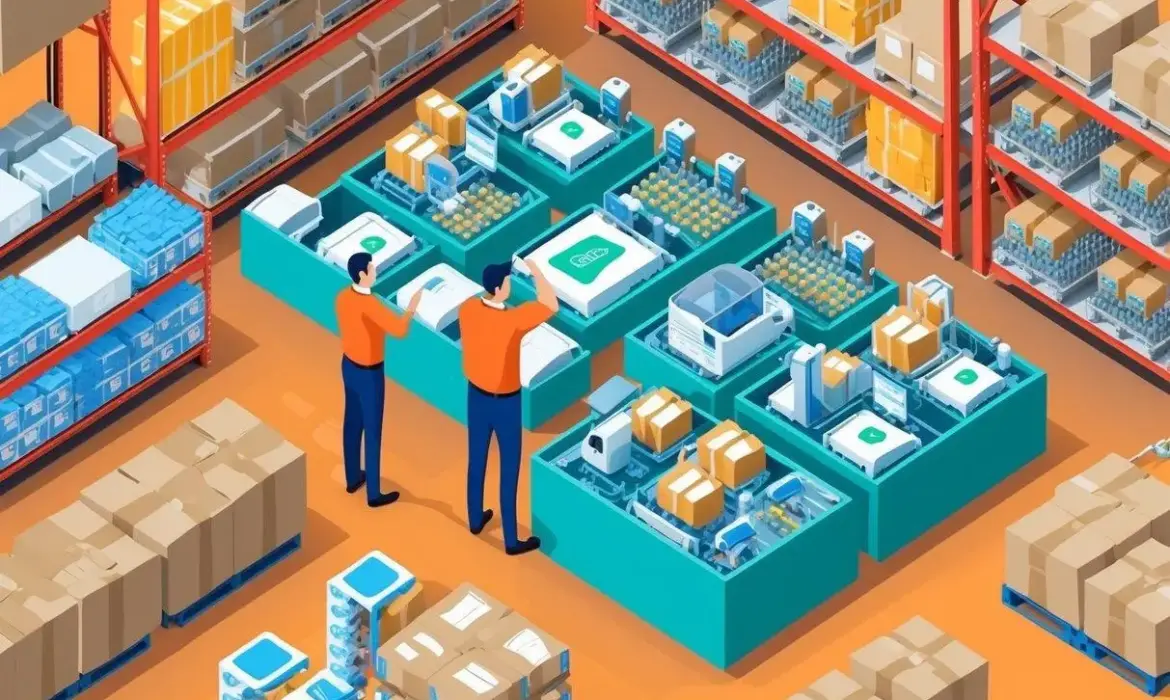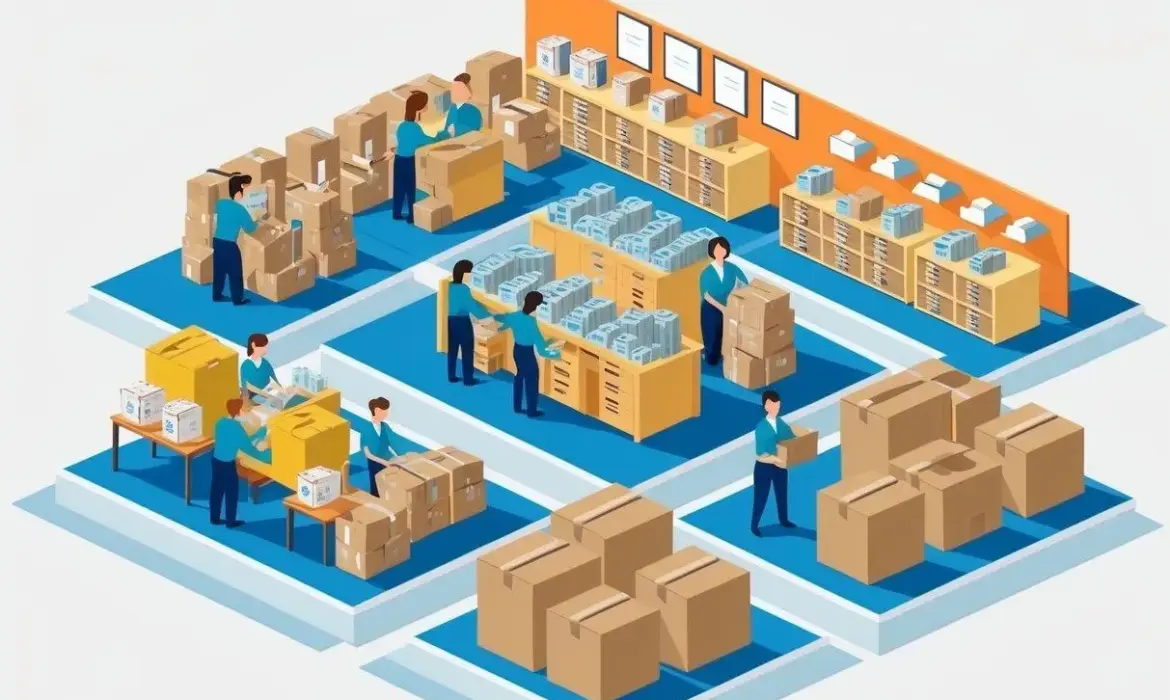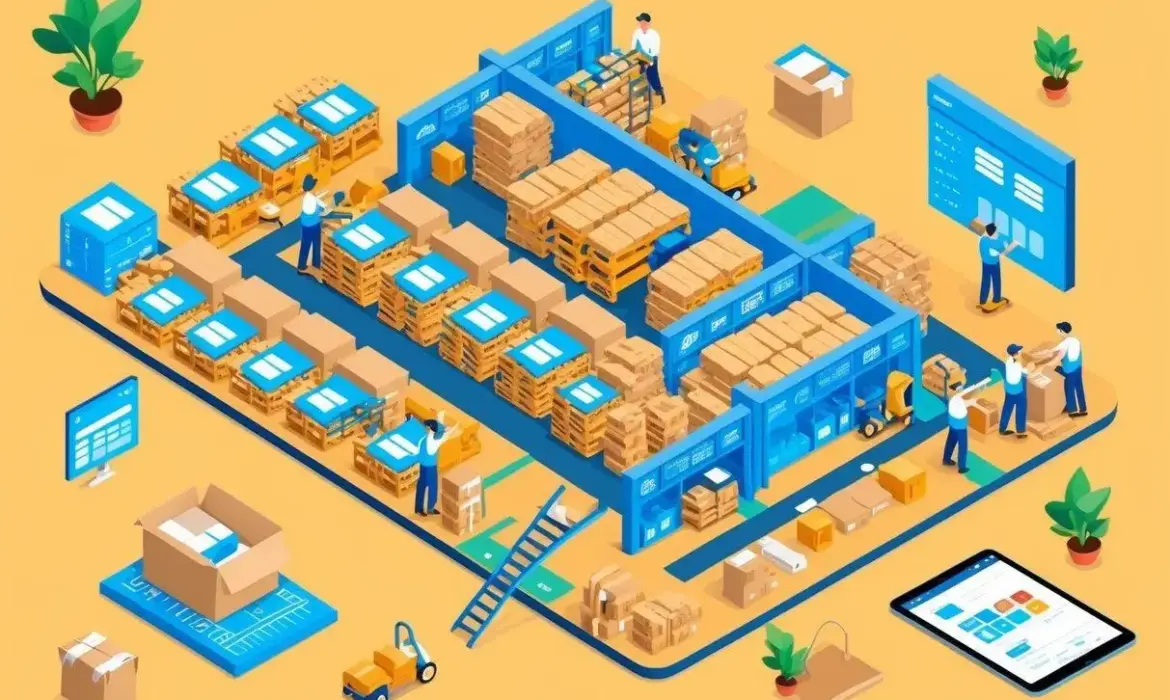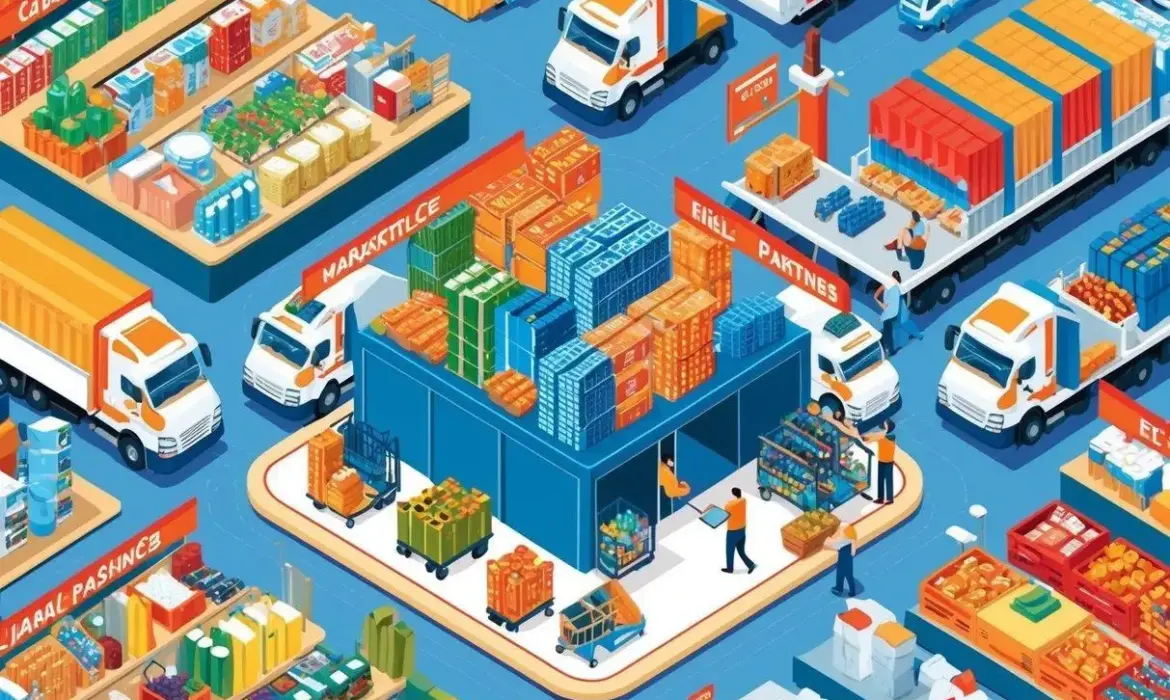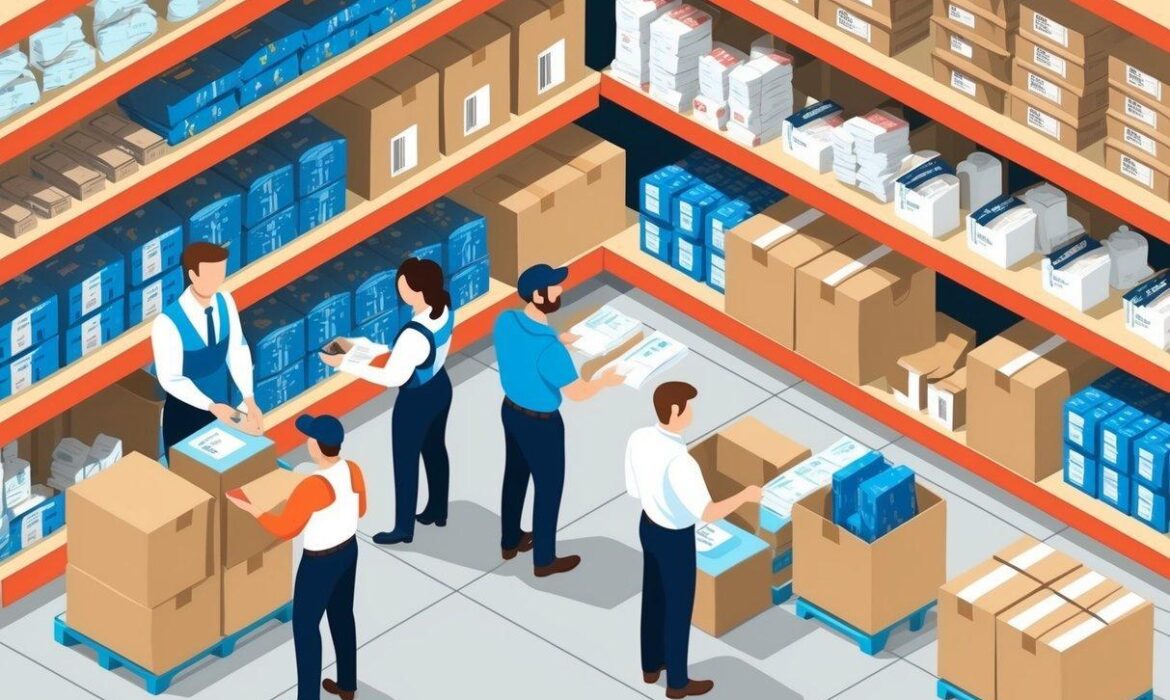The End of Section 321? Why U.S. Fulfillment Just Became the Smarter Option
For years, Section 321 was the secret weapon for eCommerce brands looking to slash costs and streamline international shipments. By allowing goods valued under $800 to enter the U.S. duty-free, it created a loophole that many brands—particularly those importing from China and Canada—used to cut down on tariffs and taxes. Entire fulfillment ecosystems grew around this regulation, especially in Canada and Mexico, offering “nearshore” solutions that let brands import cheaply and re-ship to U.S. customers.
But that’s all about to change.
A regulatory crackdown—initiated during President Biden’s term and finalized by the current administration—has put the final nail in the coffin for Section 321’s wide-scale use. Once a cornerstone of cost-saving strategies for DTC brands, the exemption’s relevance is quickly fading. And as enforcement intensifies, brands that rely on it are now facing new compliance burdens, rising costs, and delivery delays.
In this shifting landscape, fulfilling from within the U.S. has emerged as not just the safer alternative—but the more strategic and scalable one.
What Changed with the Recent Executive Order?
The most recent executive order directs U.S. Customs and Border Protection (CBP) to significantly tighten enforcement on Section 321 shipments. This includes cracking down on foreign eCommerce sellers, reining in widespread misuse of the exemption, and closing critical loopholes that allowed brands to route inventory through Canada or Mexico to avoid duties.
Key changes include:
- Enhanced reporting requirements – Merchants must now provide more detailed data on shipments and supply chain origins.
- Penalties for shipment fragmentation – Splitting bulk orders into multiple under-$800 packages to avoid duties is being aggressively targeted.
- Increased scrutiny of low-value import declarations – Authorities are focusing on chronic under-valuation and repeat offenders.
While the order primarily targets foreign sellers flooding U.S. marketplaces, the ripple effect touches all brands using Section 321. Logistics partners in Mexico and Canada are already tightening policies, and border inspections are increasing—especially at high-volume cross-docking hubs.
The message is clear: Section 321 is no longer a long-term growth strategy. It’s a short-term loophole with a short fuse.
The Hidden Costs of Section 321 Are No Longer Worth It
Section 321 once gave smaller brands a rare advantage. But today, the reality looks much different—and the hidden costs are mounting:
1. No More Duty-Free Assurance
What used to be a guaranteed exemption is now subject to interpretation and enforcement. If CBP suspects you’re fragmenting shipments, under-declaring values, or mislabeling goods, penalties can follow quickly. The result?
- Unexpected customs holds
- Massive shipment delays
- Risk of seizure and fines
For brands promising 2- or 3-day delivery, these delays aren’t just inconvenient—they’re brand-damaging.
2. Operational Complexity and Risk
Running cross-border fulfillment isn’t simple. You’re juggling:
- Import paperwork
- Third-country logistics partners
- Inventory visibility issues
- Returns routing nightmares
Every added step increases risk, especially as fulfillment grows more complex with higher volumes and faster delivery expectations.
3. Rising Logistics Costs
The real kicker? Even with the Section 321 exemption, many brands are still overpaying for shipping.
Cross-border parcels cost more to process, more to clear, and more to return. With new enforcement policies in place, those costs will only rise—without the benefit of duty savings to offset them.
The New Edge: U.S.-Based Fulfillment
With Section 321 no longer delivering the value it once did, brands are rethinking their entire fulfillment playbook. And increasingly, they’re turning to U.S.-based fulfillment to regain control, speed, and scalability.
1. Shorter Transit Times = Happier Customers
When you fulfill from within the U.S., your products move faster—especially to high-volume states like Florida, Texas, and California. Whether you’re shipping from New York, Pennsylvania, or Texas, you’re already in-country and closer to your customers.
Here’s how it stacks up:
| Destination | From Toronto, Canada | From New York, USA |
| New York, NY | 2–3 business days | 1 business day |
| Miami, FL | 4–5 business days | 2–3 business days |
| Dallas, TX | 4–6 business days | 3–4 business days |
| Las Vegas, NV | 5–7 business days | 4–5 business days |
Note: Transit times may vary by carrier, but the advantage of being inside U.S. borders is clear.
2. Lower All-In Logistics Costs
Think you’re saving money with cross-border fulfillment? Think again.
Once you include:
- Duties on imports (which are now unavoidable)
- Higher last-mile parcel rates
- Slower returns processing
- Additional compliance overhead
…it becomes clear that fulfilling from within the U.S. is often more affordable overall, particularly when using a fulfillment provider with negotiated carrier discounts.
3. Simpler Compliance, Fewer Surprises
With U.S.-based fulfillment, you’re not navigating international law, trade restrictions, or ambiguous customs rules. You’re operating under one legal framework with a clear path for scaling—no matter how fast your brand grows.
Why Brands Are Moving to Innovative Warehouse Solutions (IWS)
For brands making the smart shift to U.S.-based fulfillment, Innovative Warehouse Solutions (IWS) is the trusted partner making that transition fast, flexible, and future-proof.
Whether you’re a growing DTC brand or a global company reevaluating your North American strategy, IWS offers:
✅ Fully U.S.-based, Section 321-compliant operations
✅ Deep carrier discounts and faster ground shipping
✅ Coast-to-coast 1–3 day delivery coverage
✅ Advanced tech integrations and real-time visibility
✅ Flexible onboarding for startups and enterprise alike
And the best part? Most brands end up saving money compared to their previous fulfillment setup—while gaining speed, control, and peace of mind.
Conclusion: The Loophole Closed. The Opportunity Opened.
The era of duty-free cross-border fulfillment is ending. Section 321 was never meant to support massive DTC operations—and now, it won’t.
Brands that cling to the old model risk falling behind as enforcement increases and customer expectations continue to rise. But those that act now—moving to U.S.-based fulfillment—will gain a competitive edge in 2025 and beyond.
Innovative Warehouse Solutions is here to help you take that next step with confidence.
📦 Ready to pivot? Learn more at www.invwhs.com or reach out to schedule a free logistics audit today.
Fulfillment Costs Explained: A Transparent Guide for Online Sellers
Are unexpected shipping expenses eating into your profit margins? Many online businesses lose revenue through poorly managed fulfillment operations.
This guide breaks down order fulfillment costs into manageable components, helping you identify where your money goes and how to reduce these expenses. From storage fees to shipping rates, we’ll show you how to calculate your true fulfillment costs and apply practical strategies to cut expenses without compromising customer satisfaction.
What are Fulfillment Costs?
Fulfillment costs include all expenses associated with storing inventory and delivering products to customers after they make a purchase.
Your total fulfillment expenses come from several key components. Receiving costs cover the labor and resources needed to accept incoming inventory, inspect products, and enter them into your system. Storage fees represent the cost of warehouse space where your products wait to be sold, typically calculated per pallet, bin, or square foot per month.
Order processing expenses include picking items from inventory, packing them securely, and preparing them for shipment. These costs typically involve labor, packing materials, and quality control measures. Shipping often represents the largest fulfillment expense, varying based on package dimensions, weight, destination, and carrier services.
Many businesses overlook additional costs like returns processing, inventory management software, insurance, and special handling for fragile or regulated products. Kitting costs—combining multiple items into a single package—add to your expenses when offering product bundles or subscription boxes.
A common misconception is that fulfillment costs only include shipping. In reality, shipping is just one component of your total expenses, as outlined in our guide to streamline shipping operations. Another myth is that higher order volumes automatically lead to lower per-order costs. Though economies of scale exist, inefficient processes can actually increase costs as volume grows, a challenge discussed in our analysis of common order fulfillment mistakes.
Understanding Different Fulfillment Cost Structures

Before examining specific pricing models, let’s compare the fundamental approaches to order fulfillment and how they affect your business expenses.
In-House vs. Third-Party Fulfillment
Managing fulfillment internally gives you complete control but requires substantial upfront investment and ongoing management.
In-house fulfillment means handling all aspects of the order process within your own business. This approach provides direct control over quality and customer experience but requires investing in warehouse space, equipment, staff, and technology. Setup costs vary widely based on your operation size, plus ongoing expenses for rent, utilities, insurance, and labor. Our analysis of the true cost of self-fulfillment examines these expenses in detail.
Outsourcing to specialists who provide 3rd party fulfillment transfers these operations to external experts. This model converts fixed costs to variable expenses based on your actual order volume, eliminating the need for warehouse leases, equipment purchases, and dedicated staff. 3PLs also offer scalability during seasonal peaks without requiring permanent infrastructure expansion, which helps when managing Black Friday supply chain challenges.
| Aspect | In-House Fulfillment | Third-Party Fulfillment |
| Initial Investment | High | Low (minimal setup fees) |
| Control | Complete control over operations | Limited control, dependent on partner |
| Scalability | Requires additional investment | Easily adapts with business growth |
| Cost Structure | Fixed costs regardless of volume | Variable costs based on actual usage |
| Expertise | Requires building internal knowledge | Taps into established fulfillment expertise |
| Technology | Requires separate software investment | Includes access to fulfillment systems |
Common 3PL Pricing Models
Third-party logistics providers offer various pricing structures to fit different business needs and order profiles.
The per-order model charges a flat fee for each order processed, regardless of the number of items included. This straightforward approach works well for businesses with consistent order sizes but may cost more for those with many single-item orders. Fees vary based on complexity and service level, with additional considerations for specialized handling like small parcel fulfillment.
Per-unit pricing charges based on the number of items in each order. This model benefits businesses selling many small products but becomes more expensive for multi-item orders. Costs vary depending on product size and handling requirements, particularly for items needing white glove fulfillment or those affected by dimensional weight pricing.
Some 3PLs offer hybrid models combining fixed monthly fees with reduced per-order costs. This approach provides cost predictability yet still adjusts with volume. Watch for hidden fees like account setup, integration, minimum order requirements, and special handling charges that might not appear in initial quotes from fulfillment providers.
| Pricing Model | Best For | Potential Hidden Costs |
| Per-Order | Businesses with consistent order sizes | Order minimums, peak season surcharges |
| Per-Unit | Companies with single-item orders | Special handling, oversized charges |
| Hybrid (Monthly + Per-Order) | Growing businesses with fluctuating volume | Setup fees, integration costs |
| Value-Added Services | Specific needs (kitting, custom packaging) | Rush fees, material upcharges |
How to Calculate Fulfillment Costs: Step-by-Step Process
Breaking down your fulfillment expenses helps you understand where your money goes and identify opportunities for savings.
Identify All Cost Components
Start by listing every expense related to order processing:
- Receiving and inventory placement
- Storage (monthly or daily rates)
- Pick and pack labor
- Packaging materials
- Shipping and carrier fees
- Returns processing
- Technology and integration costs
For each category, gather at least three months of data to account for volume fluctuations. This approach provides a more accurate picture than looking at a single month, especially for seasonal businesses.
Calculate Your Per-Order Costs
Determine your total number of orders for the same period. Divide your total fulfillment expenses by this number to find your average cost per order:
Total Fulfillment Costs ÷ Number of Orders = Average Cost Per Order
For example, if your quarterly fulfillment expenses total $45,000 across 5,000 orders, your average cost per order is $9.
For more detailed insights, break down costs by order type or product category. Some products have higher fulfillment costs due to special handling, oversized dimensions, or return rates. Identifying these variations helps you make informed decisions about pricing and shipping options, as outlined in our guide on how to calculate shipping cost per item.
Use Fulfillment Software for Greater Accuracy
Modern fulfillment software automates these calculations and provides real-time visibility into cost fluctuations. These tools connect with your ecommerce platform and warehouse systems to track expenses automatically, eliminating manual data entry and reducing calculation errors.
Advanced systems can simulate different scenarios to help you understand how changes in shipping carriers, warehouse locations, or packaging methods might affect your bottom line. This predictive capability helps with planning seasonal peaks or evaluating new markets, similar to the approach needed for omnichannel fulfillment.
Strategies to Minimize Fulfillment Costs
You can reduce fulfillment expenses without sacrificing service quality or customer satisfaction.
Efficient Inventory Management
Smart inventory practices directly affect your storage costs and overall fulfillment expenses.
Adopt just-in-time inventory management to reduce storage needs by matching inventory levels with actual demand patterns. This approach minimizes capital tied up in excess stock yet maintains sufficient inventory to fulfill orders promptly. Setting reorder points based on historical sales data and lead times reduces storage costs without creating stockouts.
Regular inventory audits help identify slow-moving products consuming valuable warehouse space. Consider discontinuing items with consistently low turnover or creating targeted promotions to clear this inventory. For specialty items with low sales volume, explore dropshipping arrangements that let you offer these products without incurring storage costs.
Process similar orders in batches to improve picking efficiency, reducing labor costs and minimizing errors. This works especially well for businesses with standardized products or subscription models. Grouping orders by fulfillment requirements or delivery zones streamlines packing and shipping operations, cutting both time and material costs.
Technology and Automation Solutions
The right tech tools can dramatically reduce manual labor and streamline your fulfillment processes.
Warehouse management systems (WMS) give you real-time visibility into inventory locations, order status, and staff productivity. These systems create optimal picking routes, reduce search time, and minimize errors through barcode scanning. Combined with proper warehouse organizing, these tools can dramatically cut fulfillment times and costs. Even small operations benefit from basic WMS functionality, with cloud-based options available without major upfront investment.
Automation tools like conveyor systems, sorting machines, and robotic picking improve throughput and reduce labor costs. Though full automation requires substantial investment, many businesses can add targeted automation for high-volume processes. Start with repetitive tasks that have consistent workflows, as these provide the best return on automation investment.
Connect your ecommerce platform, inventory system, and shipping carriers to eliminate manual data entry and reduce errors. These integrations automate order processing from purchase through delivery confirmation. Automated shipping systems can compare carrier rates in real-time, helping you select the most cost-effective shipping option for each order based on weight, dimensions, and delivery timeframe.
Strategic Warehouse Location
Your warehouse location has a major impact on shipping costs and delivery times.
Analyze your customer distribution to find optimal warehouse locations that minimize shipping distances. A strategically placed fulfillment center reduces shipping costs compared to shipping from a less optimal location. This approach, known as strategic warehousing, positions your inventory closer to your customers, cutting both transit time and transportation costs.
Multi-location fulfillment networks distribute inventory across strategic regions to further reduce shipping distances and enable faster delivery. This model works particularly well for businesses with national or international customers. Each facility stocks inventory based on regional demand, enhancing both storage and shipping efficiency.
For businesses with larger shipping volumes, zone skipping offers substantial savings by consolidating multiple orders into a single shipment to a sorting facility near the final destinations. This method bypasses several carrier handling points, reducing per-package costs and often improving delivery reliability.
Key Considerations for Choosing a Fulfillment Partner
Selecting the right 3PL provider is crucial for managing costs without compromising service quality.
Focus on these essential factors when evaluating potential fulfillment partners:
- Geographic Coverage: Select a fulfillment center with locations that minimize shipping distances to your primary customers. This cuts transit times and shipping costs, especially for time-sensitive deliveries like next day air shipping.
- Technology Integration: Confirm that the 3PL’s systems connect smoothly with your ecommerce platform and other business tools. Strong integration capabilities reduce manual processes and minimize errors.
- Pricing Transparency: Choose providers offering clear, comprehensive pricing without hidden fees. Request detailed breakdowns of all potential charges, including receiving, storage, pick and pack, shipping, returns processing, and account management.
- Growth Capacity: Verify the partner can handle both your current volume and future growth without service disruptions. This flexibility matters during seasonal peaks and promotional periods.
- Industry Expertise: For products requiring special handling (fragile items, regulated goods, temperature-controlled products), look for a 3PL with relevant experience and appropriate facilities. Specialized knowledge in areas like health and beauty logistics or beverage fulfillment can make a significant difference.
- Service Guarantees: Review performance promises regarding order accuracy, processing times, inventory reconciliation, and problem resolution. These agreements protect your business from service failures.
Before making your decision, ask for references from current clients with similar products and order volumes. Ask about the provider’s reliability, communication quality, problem-solving abilities, and billing accuracy. Consider requesting a trial period to evaluate performance before signing a long-term contract.
Fulfillment Costs FAQs
Are fulfillment costs COGS?
Fulfillment costs can be part of COGS if they are directly related to the production and delivery of goods sold. Costs like storage, packaging, and handling may be included, but shipping costs are often classified as operating expenses.
What is the difference between shipment and fulfillment?
Shipment refers to the process of transporting goods to a destination, while fulfillment includes the entire order processing cycle, including storage, picking, packing, and shipping.
What is the fulfillment formula?
The fulfillment formula calculates order fulfillment efficiency:
Fulfillment Rate (%) = (Total Orders Fulfilled ÷ Total Orders Received) × 100
What is customer fulfillment?
Customer fulfillment is the process of delivering products or services to customers efficiently while meeting their expectations in terms of speed, accuracy, and service quality.
Action-Oriented Conclusion: Maximizing Success with Optimal Fulfillment
Understanding and managing fulfillment costs is essential for maintaining healthy profit margins in today’s competitive ecommerce landscape. By analyzing each component of your expenses and applying the strategies in this guide, you can improve operational efficiency without sacrificing customer satisfaction.
For many businesses, partnering with a customer-focused 3PL provider like Innovative Warehouse Solutions offers the most effective path to optimizing fulfillment operations. Our transparent pricing eliminates surprises, our real-time customer support stands out in an industry known for impersonal service, and our proven accuracy record keeps your customers happy. We handle the complexities of order fulfillment so you can focus on growing your business.
Contact us today for a personalized consultation and discover how we can help reduce your fulfillment costs.
Is Automated Fulfillment Right for Your Growing E-commerce Brand?
Quick answer: Automated fulfillment is indeed the right choice for many growing e-commerce brands.
As your order volume increases, the limitations of manual picking, packing, and shipping become increasingly difficult to manage. Automated fulfillment systems address these common obstacles by transforming time-consuming tasks into efficient operations that scale with your business growth.
Learn more about why automated fulfillment is good for most brands and can be right for your business.
Benefits of Automated Fulfillment for E-commerce Brands
Adopting automation in your fulfillment process creates numerous advantages that directly impact your bottom line and customer satisfaction.
Optimized Operations and Efficiency
Automated fulfillment systems transform manual processes by integrating technology at every step. These systems use barcode scanning, conveyor systems, and robotic picking to move products through your warehouse with minimal human intervention. This technological integration markedly reduces picking errors while accelerating the entire fulfillment process.
The time-saving aspect of automation is substantial. What once took hours of manual labor can be accomplished in minutes. Automated sorting systems can process hundreds of orders simultaneously, while automated packaging machines can prepare shipments at rates that manual teams simply cannot match.
Many businesses working with fulfillment centers report processing times dropping from days to hours after adopting automation. This efficiency translates directly to faster customer delivery times and higher throughput capacity during peak seasons.
Improved Customer Experience
Automated order fulfillment directly boosts customer satisfaction by addressing the two factors customers care about most: speed and accuracy. When orders are processed faster and with fewer errors, customers receive exactly what they ordered, when they expect it.
Businesses adopting fulfillment automation typically experience notable reductions in delivery times while maintaining exceptional order accuracy. This performance level creates trust and encourages repeat purchases, ultimately increasing customer lifetime value.
Many beverage companies have seen marked improvements in customer satisfaction after transitioning to automated fulfillment systems that enable consistent next-day delivery options. As noted in our guide on drinks logistics, this industry particularly benefits from automation due to fragile products and weight considerations.
Cost Savings and Scalable Solutions
While the upfront investment in automated fulfillment technology may seem substantial, the long-term cost savings are compelling. Labor costs typically represent a major portion of fulfillment expenses, and automation can substantially reduce these costs while simultaneously increasing output.
Inventory management becomes more precise with automation. Real-time tracking reduces stock discrepancies, preventing both costly overstocking and revenue-damaging stockouts. Warehouse space utilization improves through vertical storage systems and optimized picking routes, allowing you to maximize your existing facility footprint.
Most importantly, automated systems grow seamlessly with your business. Unlike manual processes where doubling order volume might require doubling staff, automated fulfillment systems can handle substantial increases in volume with minimal additional investment. This scalability proves particularly valuable for seasonal businesses or those in rapid growth phases.
Who Can Benefit from Automated Fulfillment?
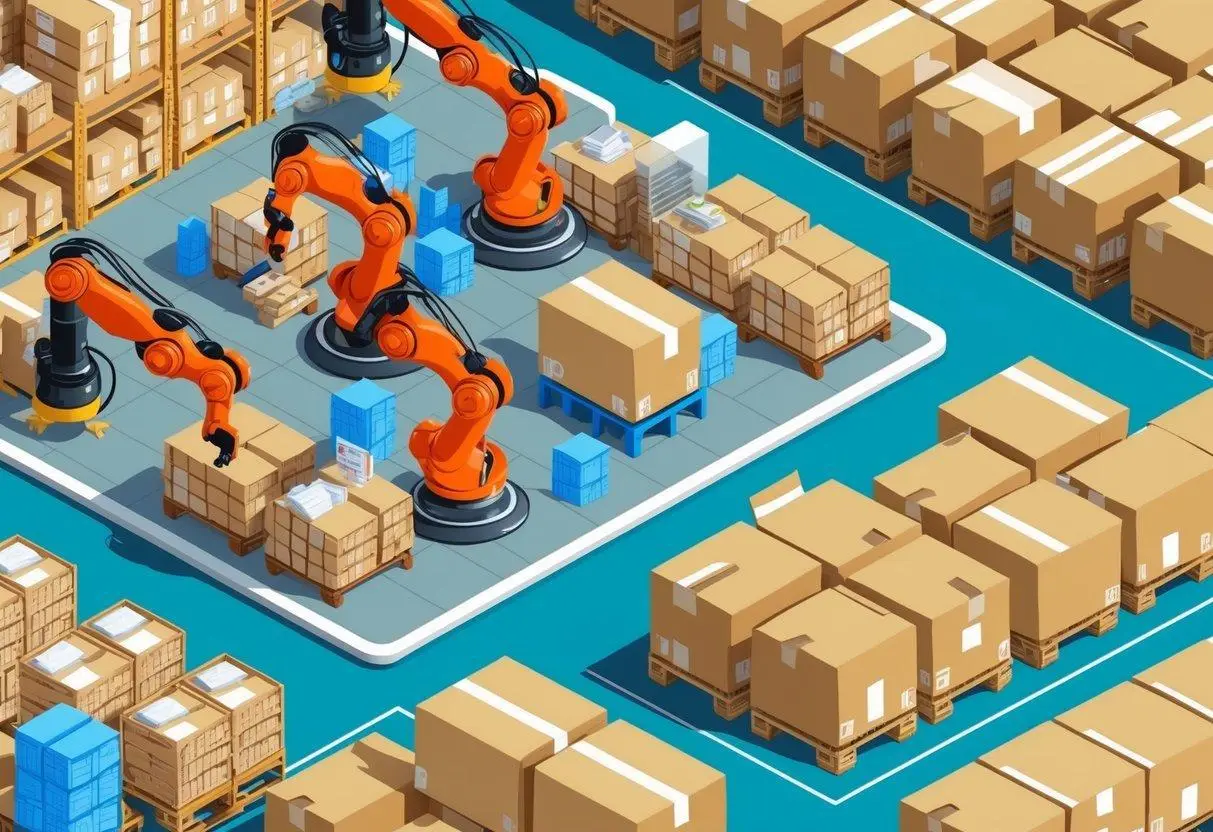
Not every business needs to implement automated fulfillment systems immediately. Our experience shows specific types of operations gain the greatest advantages.
Fast-growing e-commerce brands often reach a tipping point where manual processes cannot keep pace with increasing order volumes. These businesses frequently struggle with hiring and training enough staff during growth phases, leading to fulfillment bottlenecks. Automated fulfillment systems allow these brands to scale operations smoothly without proportional increases in labor costs.
Companies handling high order volumes in health and beauty, beverage, or lightweight consumer goods face unique fulfillment requirements. When processing numerous orders daily, even small inefficiencies or error rates become magnified.
This is particularly true for recurring shipment models, where subscription box fulfillment requires exceptional consistency month after month. Automated order fulfillment systems excel in these environments, maintaining consistency and accuracy regardless of volume fluctuations. As discussed in our guide about critical strategies for Black Friday, automation helps businesses manage seasonal spikes without service disruptions.
Retailers focusing on operational excellence to improve margins benefit substantially from automated systems. By reducing labor costs and minimizing errors that lead to returns and customer service issues, automated fulfillment directly impacts profitability. Businesses with complex inventory management needs find that automated systems provide precision impossible with manual methods.
The table below helps determine if your business aligns with automation needs:
| Business Characteristic | Automation Readiness |
| Monthly order volume exceeds 300 | High |
| Experiencing rapid growth | High |
| Struggling with order accuracy | High |
| Managing diverse product lines | High |
| Facing seasonal volume variations | High |
| Operating with thin profit margins | High |
| Just starting out | Consider 3PL partnership |
| Limited capital for investment | Consider 3PL partnership |
Implementing Automated Fulfillment in Your Business
The transition to automated fulfillment requires careful planning and execution to maximize success.
Evaluate Current Fulfillment Operations
Before adopting automation, conduct a thorough assessment of your current fulfillment processes to identify pain points and opportunities for improvement. Start by mapping the complete order fulfillment journey from the moment an order is placed until it reaches the customer.
Track key performance indicators such as order processing time, picking accuracy, packing efficiency, and shipping timeframes. Identify which stages consume the most resources or create bottlenecks in your operation. Pay special attention to error-prone processes that affect customer satisfaction.
Document your current technology stack, including e-commerce platforms, inventory management systems, and shipping software. Understanding these elements helps determine what automation solutions will integrate most effectively with your existing infrastructure. This evaluation creates a baseline against which you can measure improvements after adopting automated systems.
Selecting the Right Fulfillment Software
Choosing appropriate fulfillment software forms the backbone of your automation strategy. Look for systems offering comprehensive features that address your specific business needs while providing room for growth.
The most effective fulfillment software solutions provide real-time inventory visibility across all sales channels and warehouse locations. This visibility prevents overselling and allows for proactive inventory management. Order synchronization capabilities confirm that orders from multiple platforms (your website, marketplaces, brick-and-mortar locations) flow seamlessly into a unified system.
Integration capabilities should be a primary consideration. Your fulfillment software needs to connect with your e-commerce platform, shopping cart, marketplace listings, shipping carriers, and accounting systems. For online retailers using popular CMS platforms, finding 3PL for WordPress solutions that integrate seamlessly is essential for growth. As outlined in our guide on omnichannel fulfillment, these integrations create a cohesive ecosystem that minimizes manual data entry and reduces errors.
Connecting with Your E-commerce Platform
The connection between your e-commerce platform and fulfillment system determines how smoothly orders flow through your operation. Seamless integration eliminates the need for manual order entry and reduces the delay between when customers place orders and when fulfillment begins.
Most modern e-commerce platforms offer API connections that allow for direct communication with fulfillment systems. These connections enable automatic transmission of order details, customer information, and shipping preferences directly to your fulfillment software. They also facilitate the return of tracking information and delivery updates to your e-commerce platform, where customers can check their order status.
When evaluating integration options, consider how quickly data syncs between systems. Near-real-time synchronization prevents delays in order processing and inventory updates that could lead to fulfillment errors. Also assess how the integration handles exceptions, as robust error handling prevents orders from getting lost between systems.
Advanced Strategies for Fulfillment Optimization

Once you’ve implemented basic automation, consider these advanced strategies to further refine your fulfillment operations.
Leveraging Predictive Analytics and Automation Tools
Predictive analytics transforms automated fulfillment from reactive to proactive by anticipating customer behavior and market trends. These tools analyze historical sales data, seasonal patterns, and external factors to forecast demand with remarkable accuracy.
By incorporating predictive analytics in your automated fulfillment system, you can optimize inventory levels across warehouse locations, reducing both stockouts and excess inventory costs. This approach allows you to position inventory strategically based on anticipated regional demand, cutting shipping costs and delivery times.
Advanced warehouse automation tools like automated storage and retrieval systems take fulfillment efficiency to another level. These systems use robots and conveyor systems to retrieve products from dense storage arrangements, maximizing space utilization while minimizing picker travel time. For businesses with space constraints or high SKU counts, these systems can dramatically increase throughput within existing facilities.
Optimizing Returns Management
Returns management often remains a manual process even in otherwise automated operations, creating a bottleneck and potential customer satisfaction issue. Incorporating automated returns management closes this loop in your fulfillment operation.
Automated returns systems begin with customer-friendly return portals integrated with your e-commerce platform. Customers can initiate returns, print shipping labels, and receive status updates without contacting customer service. Behind the scenes, these systems generate return merchandise authorizations automatically and alert warehouse staff about incoming returns.
When returns arrive at your facility, barcode scanning automatically updates inventory levels and triggers appropriate actions—whether restocking, inspection, refurbishment, or disposal. The system can also automate refund processing based on predefined rules, eliminating delays that frustrate customers. As highlighted in our guide on order fulfillment mistakes, efficient returns processing is critical for maintaining customer loyalty.
Automated Fulfillment FAQs
What does automated fulfillment mean?
Automated fulfillment refers to using technology, such as robotics and software, to process orders, pick and pack items, and manage inventory. Automation reduces manual labor, increases speed, and improves accuracy in fulfillment centers.
What are examples of automated processes?
Examples of automated processes include order fulfillment, inventory management, chatbots for customer support, and automated invoicing. Businesses use robotic picking systems, barcode scanning, and AI-driven analytics to streamline operations.
What is the difference between fulfillment and logistics?
The main difference between fulfillment and logistics is that fulfillment focuses on processing and shipping customer orders, while logistics manages transportation, warehousing, and supply chain operations. Fulfillment is a subset of logistics, ensuring order completion.
What is order fulfillment KPI?
Order fulfillment KPIs measure efficiency in processing and delivering orders. Key metrics include order accuracy rate, fulfillment cycle time, inventory turnover, and on-time delivery rate. These KPIs help optimize supply chain performance.
How do automated warehouses work?
Automated warehouses use robotics, AI, and conveyor systems to manage inventory, pick and pack orders, and streamline shipping. Technologies like automated storage and retrieval systems (AS/RS) improve speed and accuracy while reducing labor costs.
Take Your E-commerce Growth to the Next Level with Automated Fulfillment
Automated fulfillment represents a significant competitive advantage for growing e-commerce brands facing increasing order volumes and customer expectations. By optimizing operations, boosting accuracy, and scaling efficiently with your business growth, these systems directly impact both customer satisfaction and your bottom line.
Whether you choose to implement automation in-house or partner with a 3PL provider offering automated fulfillment services, the key is taking a strategic approach.
At Innovative Warehouse Solutions, we specialize in helping growing e-commerce brands implement transparent, customer-focused automated fulfillment strategies tailored to your unique needs. Our clear pricing and personalized approach guarantee you get exactly the level of automation your business requires without unnecessary complexity or hidden costs.
Contact us today to learn how we can handle your fulfillment complexity, allowing you to focus on creating more orders and growing your brand.
Seamless Shopify 3PL Integration for Your Online Store
Is your Shopify store growth outpacing your fulfillment capabilities? As orders multiply, managing warehousing, picking, packing, and shipping in-house can pull your focus away from growing your business. Shopify 3PL integration lets you hand these operational burdens to specialists while you concentrate on creating more orders. This approach not only simplifies operations but delivers the faster, more reliable shipping experience your customers expect.
What is 3PL Integration?
Third-party logistics integration connects your Shopify store with specialized fulfillment services that handle your inventory and shipping needs.
A 3PL provider takes responsibility for your warehousing, inventory management, order processing, and shipping operations. The integration creates a direct link between your Shopify store and the 3PL’s systems. When customers place orders, this information flows automatically to your logistics partner, starting the fulfillment process without requiring manual steps. Your inventory levels update in real time, orders process automatically, and tracking information passes seamlessly to your customers.
This arrangement adapts to your growth without demanding substantial investments in warehouse space, fulfillment staff, or complex systems. For businesses experiencing rapid growth or seasonal swings in order volume, this flexibility proves particularly valuable.
Benefits of 3PL Integration for Your Shopify Store
The right 3PL partnership transforms how your Shopify business operates, offering advantages beyond simple order fulfillment.
When your fulfillment runs smoothly in the background, your team reclaims valuable time for revenue-generating activities. Instead of managing warehouse operations and tracking shipments, you can develop new products, refine marketing strategies, and build customer relationships. This shift in focus often leads to accelerated business growth and improved profitability.
For brands in specialized industries like health and beauty or beverages, working with a 3PL that understands your unique requirements saves countless hours of operational headaches. Your specialized products receive the proper handling while maintaining compliance with industry regulations.
Another significant advantage of 3PL partnerships is the transformation of fixed costs into variable expenses. Instead of committing to warehouse leases, equipment purchases, and full-time staff regardless of your order volume, you pay based on the services you use. This approach preserves capital for growth investments and protects your cash flow during slower periods.
| In-House Fulfillment | 3PL Fulfillment |
| Fixed costs regardless of volume | Variable costs that scale with business |
| Limited geographic reach | Multiple fulfillment locations |
| Capital tied up in warehouse space | No major capital investment |
| Need to manage fulfillment staff | Experienced professionals included |
| Limited shipping carrier options | Access to discounted shipping rates |
Key Features of Shopify 3PL Integration

A quality 3PL integration with Shopify should include several crucial features that maximize the value of your partnership.
Seamless Order Processing
The core benefit of proper integration is the automatic flow of order information between platforms. When a customer completes a purchase on your Shopify store, the order details travel instantly to your 3PL’s system without manual intervention. This automation reduces errors from manual data entry and speeds up the entire fulfillment process.
Your 3PL partner should provide custom packing slips, branded packaging options, and gift-wrapping services when needed – maintaining your brand identity throughout the customer experience. Many businesses underestimate how these touchpoints influence customer perception and repeat purchase behavior. The right 3PL partnership preserves the personal touch your customers expect while handling the operational details behind the scenes.
Dynamic Inventory Management
Accurate inventory is critical for e-commerce success. Your 3PL integration should provide a single source of truth for stock levels across all sales channels and fulfillment locations. When items arrive at the warehouse, ship to customers, or move between locations, these changes should reflect immediately in your Shopify admin.
This visibility helps prevent the costly customer service problems caused by overselling. It also supports smart purchasing decisions by showing actual stock levels and consumption rates. For businesses with multiple product lines or SKUs, this real-time accuracy proves particularly valuable in maintaining customer satisfaction.
Performance Analytics
Data-driven decisions require accurate, accessible information. A strong 3PL integration provides insights into key performance indicators like fulfillment speed, shipping costs by destination, and delivery timeframes. These metrics help identify opportunities to improve customer experience and reduce costs.
Look for reporting capabilities that match your business needs – whether that’s simple daily summaries or detailed analysis of seasonal trends. The right analytics package turns fulfillment data into actionable business intelligence that supports strategic planning and growth.
Implementation Guide for Shopify 3PL Integration
Successfully connecting your Shopify store with a 3PL provider requires careful planning and execution.
Choosing Your 3PL Partner
Finding the right 3PL for your Shopify store starts with assessing your specific needs. Consider your product types, order volume, and customer locations when evaluating potential partners. Key factors to investigate include:
- Integration compatibility with Shopify and any other platforms you use
- Experience with products in your category, especially for regulated goods
- Warehouse locations relative to your primary customer base
- Pricing structure and minimum volume requirements
- References from similar businesses in your industry
Request demonstrations of their technology platforms and visit facilities when possible. The right partner combines technical capability with a service approach that matches your business values and customer expectations.
Technical Integration Process
Once you’ve selected your partner, the technical integration typically follows these steps:
- Install the 3PL’s Shopify app or implement their API connection
- Map your products and SKUs to the 3PL’s system
- Configure rules for order routing and special handling requirements
- Set up inventory sync parameters and alerts
- Test the connection with sample orders before going live
Most quality 3PL providers offer guided onboarding to simplify this process. Their technical teams should work directly with you to address any customization needs and resolve integration challenges. The goal is creating a connection that works reliably without requiring constant oversight.
Optimization Strategy
After initial setup, focus on refining your fulfillment operations for maximum efficiency. Analyze early performance data to identify potential improvements in warehouse locations, shipping methods, or packaging options. Consider implementing rules for:
- Intelligent order routing based on inventory availability and customer location
- Custom packaging selection based on order contents
- Automated communications at key fulfillment milestones
Regular reviews with your 3PL account manager can uncover additional opportunities to improve performance and reduce costs. The most successful partnerships evolve over time as your business grows and customer expectations change.
Common Challenges and Solutions
While 3PL integration offers significant benefits, understanding potential challenges helps you navigate them effectively.
Data Security Considerations
Sharing customer information with third parties always raises privacy concerns. Protect your business and customers by confirming your 3PL partner has robust security measures in place. Look for:
- Encryption for data in transit and at rest
- Clear data handling policies that comply with relevant regulations
- Limited access controls for sensitive information
- Regular security audits and updates
Discuss these topics directly during your selection process and include security requirements in your service agreement. Transparency about how customer data will be protected builds trust in your partnership from the beginning.
Technical Integration Issues
Complex systems sometimes create unexpected challenges during setup. Common hurdles include:
- Data format inconsistencies between platforms
- API limitations that restrict certain information types
- Syncing delays during high-volume periods
- Custom Shopify modifications that affect standard integrations
Work closely with technical teams from both your company and the 3PL to identify and resolve these issues during implementation. Thorough testing with various order scenarios helps catch potential problems before they impact real customers.
Communication Framework
Successful partnerships depend on clear communication channels. Establish protocols for:
- Handling exception cases that don’t fit standard processes
- Escalating urgent issues that require immediate attention
- Regular performance reviews and improvement planning
- Change management when either system requires updates
Proactive communication prevents small issues from becoming major disruptions in your product fulfillment process and builds a collaborative relationship with your 3PL partner.
Evaluating 3PL Providers for Your Shopify Store
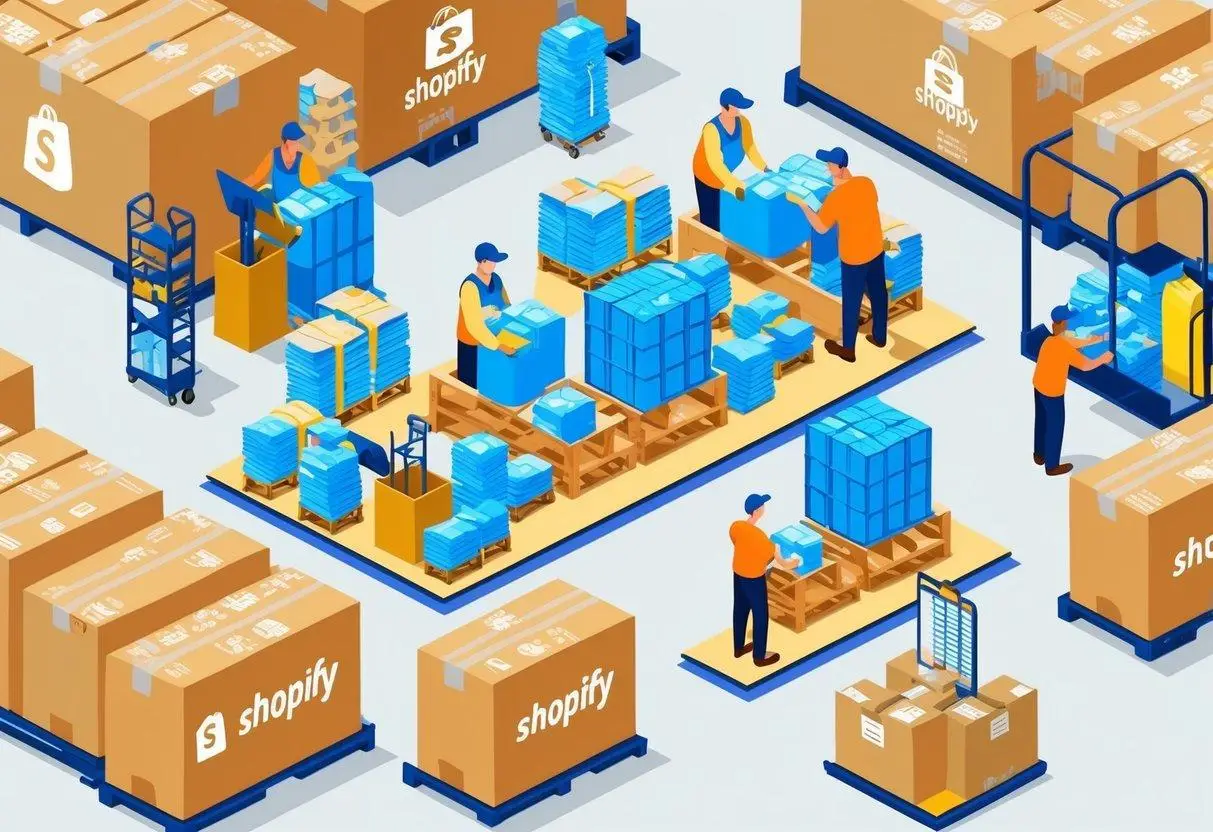
Finding the right Shopify third party logistics partner requires careful evaluation across multiple dimensions.
Transparency in Pricing
Hidden fees can quickly erode the financial benefits of outsourcing fulfillment. Look for providers who offer clear, comprehensive pricing with no surprises. A transparent pricing structure should include:
| Cost Component | What to Look For |
| Onboarding | Fixed, one-time setup cost with clear deliverables |
| Storage | Simple monthly or daily rates based on space used |
| Order processing | Flat per-order fees or tiered pricing based on volume |
| Special handling | Published rates for additional services you might need |
| Returns | Clear process and costs for return management |
Ask potential partners about volume minimums, peak season surcharges, and account management fees. Understanding the complete cost structure helps you accurately compare options and forecast your fulfillment expenses.
Technology Capabilities
The technological foundation of your 3PL partner directly impacts your customer experience. Evaluate their systems for:
- Integration methods with Shopify (native app, API, or manual processes)
- Real-time inventory and order status visibility
- Reporting capabilities and data access
- Mobile access for on-the-go management
- System reliability and uptime guarantees
Request demonstrations of their platform and ask about their technology development roadmap. The best partners continually invest in improving their systems to keep pace with e-commerce evolution.
Service Level Commitments
Clear expectations prevent disappointment in your partnership. Discuss and document commitments for:
- Order processing timeframes (from receipt to shipment)
- Inventory receiving and processing speed
- Accuracy standards for picking and packing
- Communication responsiveness
- Issue resolution processes
Many 3PL warehouse Shopify partners will formalize these expectations in service level agreements (SLAs) that provide accountability and performance standards for both parties.
Shopify 3PL Integration FAQs
How does Shopify 3PL work?
Shopify 3PL (Third-Party Logistics) works by outsourcing storage, packing, and shipping to fulfillment centers. Businesses integrate 3PL providers with Shopify to automate order processing. When a customer orders, the 3PL partner picks, packs, and ships the product directly.
How to connect Shopify to a warehouse?
Connect Shopify to a warehouse by integrating a warehouse management system (WMS) or a third-party fulfillment provider. Use Shopify apps like ShipBob or Flexport to sync inventory and automate order fulfillment. API connections enable real-time inventory tracking.
What is the best warehouse management system for Shopify?
The best warehouse management systems (WMS) for Shopify include ShipBob, NetSuite, and Fishbowl. These systems streamline inventory tracking, automate fulfillment, and integrate with Shopify to manage orders efficiently.
Does Shopify automatically ship orders?
Shopify does not automatically ship orders but automates order processing. Merchants must use Shopify Shipping or third-party fulfillment services like ShipBob to print labels and ship products. Orders are processed automatically, but shipping requires carrier integration.
What is the difference between logistics and 3PL?
The main difference between logistics and 3PL is that logistics refers to managing the supply chain, while 3PL (Third-Party Logistics) outsources logistics tasks to external providers. Logistics covers inventory, transportation, and warehousing, whereas 3PL companies handle fulfillment and shipping on behalf of businesses.
Get Started with Innovative Warehouse Solutions
Unlike typical 3PL providers, we at Innovative Warehouse Solutions focus on delivering exceptional customer support in an industry known for impersonal service. Our team provides real-time, personalized assistance that helps you solve problems quickly and keep your customers happy. When you call, you speak with a real person who understands your business – not an automated system.
Our pricing model delivers complete transparency with no hidden fees or surprise charges. You’ll know exactly what to expect on every invoice, making budgeting predictable and straightforward. This clarity extends to our entire operation, with accurate, accessible reporting on inventory levels, order status, and fulfillment performance.
For health and beauty brands, beverage companies, and sellers of lightweight consumer goods, our specialized handling protocols ensure your products arrive in perfect condition. Our warehouse team has extensive experience with these categories and understands their unique requirements.
Request a consultation and discover why brands with demanding fulfillment requirements choose Innovative Warehouse Solutions as their trusted 3PL partner.
Building Your Subscription Box Fulfillment Strategy from Startup to Scale
Is your subscription box business struggling with timely deliveries and customer satisfaction? The right subscription box fulfillment strategy could transform your operations and boost your growth potential.
The subscription box market continues to expand rapidly, with US sales projected to reach $38.2 billion by 2023. Yet many businesses fail to reach their potential due to inefficient fulfillment processes. While product curation often takes center stage, the logistics behind getting those carefully selected items to customers consistently and accurately is what truly drives long-term success. Creating a strategic fulfillment plan now will save you countless headaches as your subscriber base grows.
Preparing to Launch Your Subscription Box Service
Before diving into operations, you need a solid foundation that will support your business as it grows.
Understanding Subscription Box Fulfillment
Subscription box fulfillment covers the complete process of preparing and delivering subscription-based products to customers on a recurring schedule. Unlike standard ecommerce shipping, subscription box logistics require consistent timing, predictable inventory management, and the ability to handle multiple simultaneous shipments at specific intervals.
For subscription-based businesses, reliable fulfillment isn’t just a back-end operation—it’s central to your customer experience. When subscribers sign up, they expect their boxes to arrive on time, every time, with the correct items in perfect condition. This consistency builds trust and reduces cancellations.
Subscription boxes typically fall into three main categories:
- Curated collections (personalized selections based on customer preferences)
- Replenishment services (regularly replacing consumable products)
- Discovery boxes (introducing customers to new products)
Each type has unique operational needs, from custom picking for personalized boxes to forecast planning for replenishment services.
Initial Steps Before Launch
Before launching your subscription service, conduct thorough market research to validate demand. Study your target audience’s preferences regarding delivery frequency, price points, and product types to develop a subscription model that resonates with potential customers.
Your ecommerce platform forms the technological backbone of your subscription business. Select a platform with robust subscription management capabilities, including recurring billing, account management, and easy cancellation options. Popular options include Shopify with subscription apps, Cratejoy, or Subbly.
For those using WordPress, look into specialized WP warehousing solutions that can grow alongside your business while maintaining seamless integration with your existing site.
Setting up reliable inventory management is necessary for subscription businesses. Unlike traditional retail where stock-outs simply mean lost sales, running out of inventory for subscription boxes means disappointing existing customers who’ve already paid. Develop relationships with multiple suppliers, create safety stock policies, and implement inventory tracking systems.
Partnering with a Fulfillment Provider
While self-fulfillment might work initially, outsourcing to a specialized subscription box fulfillment center often becomes necessary as you scale. In-house fulfillment gives you complete control but requires significant investment in warehouse space, equipment, and staff. In contrast, partnering with subscription box fulfillment services provides immediate access to established infrastructure, expertise, and economies of scale.
When evaluating fulfillment partners, prioritize those with subscription-specific experience and technology integrations with your ecommerce platform. Look for providers offering value-added services like custom packaging, insert printing, and kitting capabilities. Equally important are their quality control measures and ability to meet your specific shipping timelines.
Cost structures vary widely among subscription fulfillment companies. Request detailed breakdowns of receiving fees, storage costs, pick and pack charges, shipping rates, and any special handling fees. While price matters, remember that the cheapest option isn’t always the most cost-effective when considering the impact of errors and delays on your retention rates.
| Fulfillment Approach | Advantages | Disadvantages |
| In-House Fulfillment | Complete control over operations<br>Direct oversight of quality<br>No third-party markup | Requires warehouse investment<br>Limited scalability<br>Diverts focus from core business |
| 3PL Partnership | Scalable infrastructure<br>Professional expertise<br>Advanced technology systems | Less direct control<br>Potential communication gaps<br>Shared attention with other clients |
Launching Your Subscription Box Business
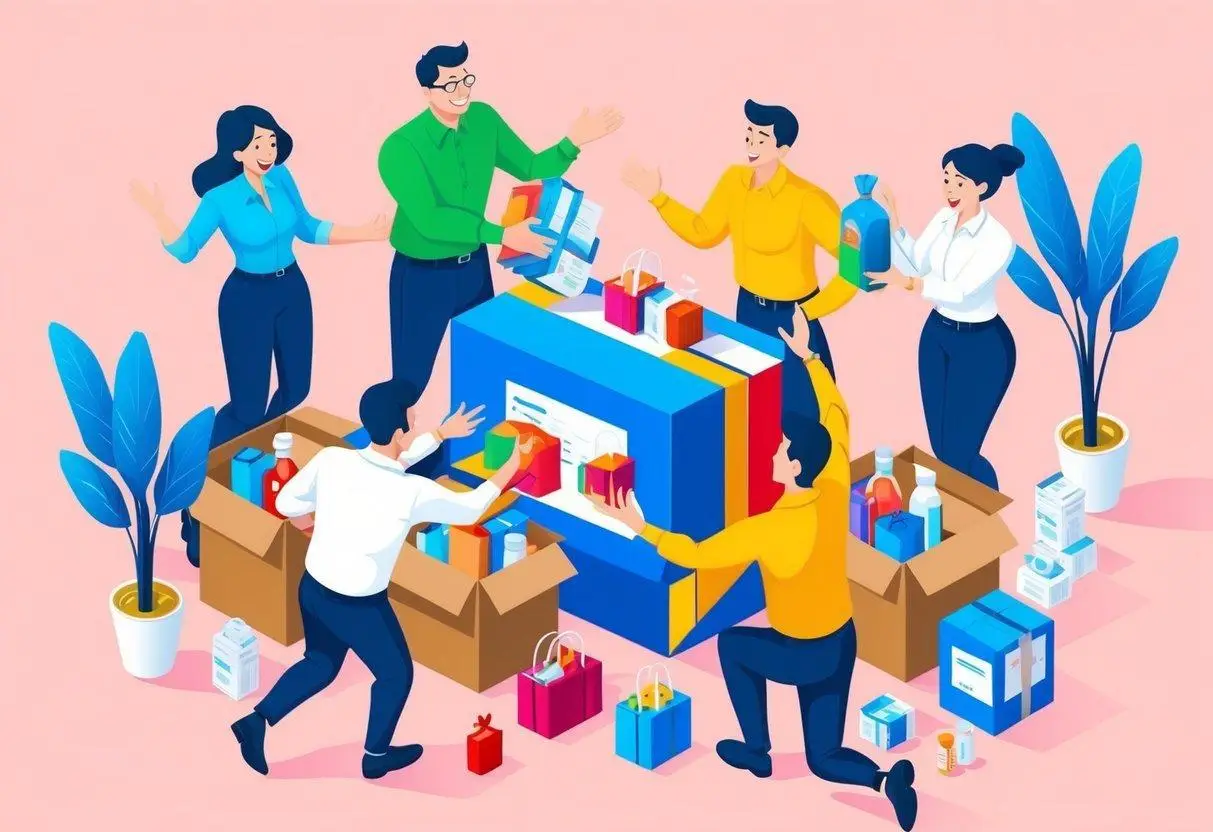
Once you’ve established your foundation and selected your fulfillment approach, it’s time to focus on the operational elements that will define your customers’ experience.
Designing Your Subscription Box
Your subscription box packaging serves as the physical embodiment of your brand. Investing in custom packaging with your logo, brand colors, and distinctive design elements helps create recognition and excitement when the package arrives on your customer’s doorstep.
The unboxing experience has become a significant factor in subscription box success, with many customers sharing their moments on social media. Consider elements like tissue paper, custom void fillers, branded stickers, and thoughtfully arranged products to create a memorable moment. This attention to presentation can transform a simple delivery into an engaging experience.
Smart subscription box companies continuously refine their packaging based on customer feedback. Establish channels for collecting customer opinions about box design, packaging materials, and presentation through post-delivery surveys or social media monitoring. This feedback loop allows you to make data-driven improvements that enhance satisfaction and reduce shipping costs.
Fulfillment Process Overview
Effective subscription box fulfillment follows a structured process beginning with inventory reception. Products arrive at the fulfillment center, undergo quality inspection, and enter inventory management systems. Prior to the billing cycle, systems generate pick lists for the upcoming subscription run based on customer preferences.
The core of subscription box fulfillment involves:
- Picking items for each order
- Assembling them according to personalization requirements
- Packing them securely in branded packaging
- Quality control checks throughout the process
- Applying shipping labels and transferring to carriers
As your subscription business grows, consider implementing an automated fulfillment system to reduce labor costs and increase accuracy. Your fulfillment operation should connect your ecommerce platform, inventory management system, and shipping software to create a seamless information flow. Look for partners offering real-time inventory visibility and smart parcel management solutions to minimize manual intervention and potential errors.
Marketing and Customer Engagement
Successful subscription businesses leverage multiple marketing channels to attract and retain customers. Email marketing remains particularly effective for subscription models, allowing you to showcase upcoming boxes, announce special additions, and provide shipping updates. Social proof through customer testimonials helps overcome the subscription commitment hurdle for new customers.
Social media platforms provide ideal venues for subscription box marketing, especially visually-oriented channels like Instagram and TikTok. Encourage customers to share unboxing videos using your branded hashtag, and consider partnering with influencers whose audience matches your target demographic. These authentic endorsements often drive subscription growth more effectively than traditional advertising.
Building a referral program incentivizes your satisfied customers to become brand advocates. Offer rewards for successful referrals, such as discounts on future boxes or exclusive items. Additionally, implement a structured approach to collecting and showcasing customer reviews on your website and third-party platforms. Positive reviews addressing both product quality and fulfillment reliability build trust with potential subscribers.
| Subscription Box Types | Fulfillment Considerations | Customer Expectations |
| Curated Collections | Personalized picking processes<br>Customer preference tracking<br>Variation management | Personalization accuracy<br>Discovery of new products<br>Alignment with stated preferences |
| Replenishment Services | Consistent product availability<br>Predictable inventory needs<br>Timing precision | On-time delivery<br>Never running out<br>Product consistency |
| Discovery Boxes | Rotating inventory management<br>New product onboarding<br>Educational materials | Surprise and delight<br>High-quality curation<br>Learning about new products |
Scaling Your Subscription Box Business
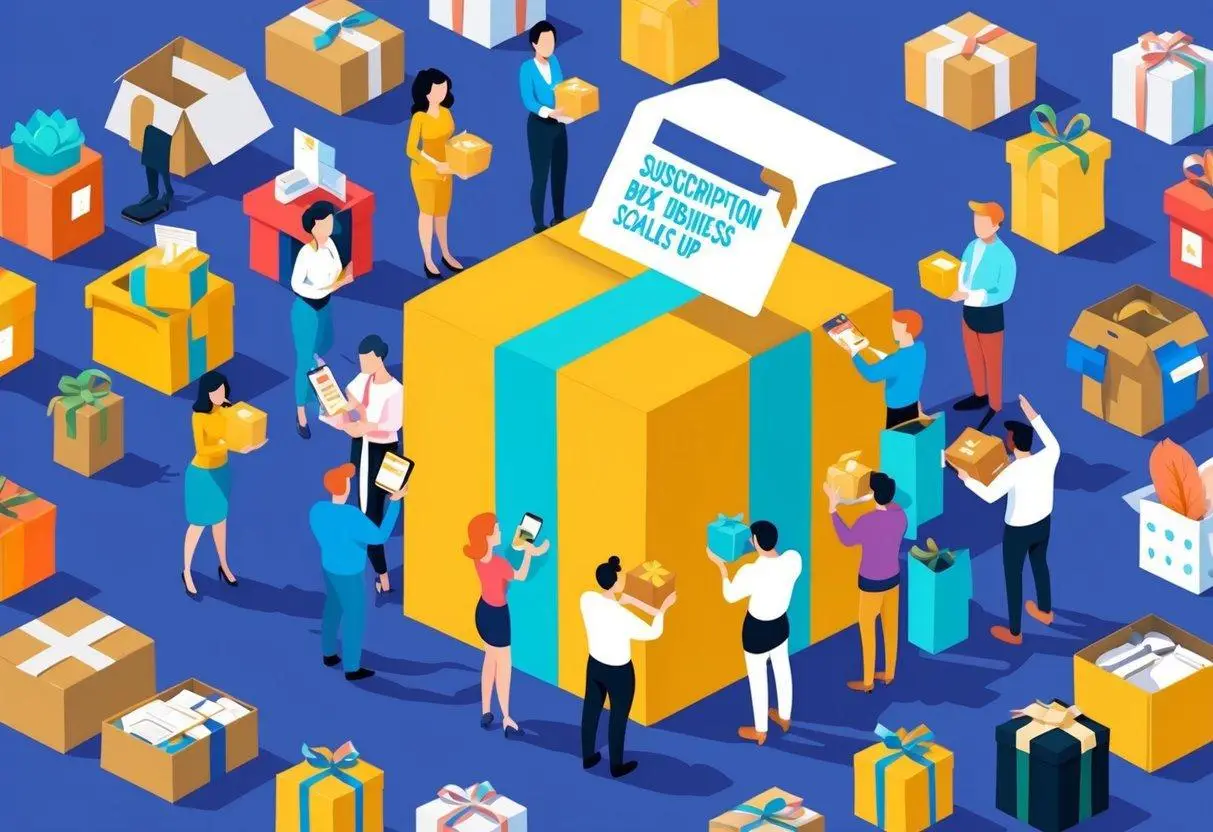
As your subscriber base grows, your fulfillment strategy must evolve to maintain efficiency and customer satisfaction while supporting your expansion.
Enhancing Your Fulfillment Strategy
Data analysis becomes increasingly valuable as your subscription business scales. Implement analytics tools that provide insights into metrics like fulfillment accuracy, shipping times, and inventory turnover. These metrics help identify bottlenecks within your operations.
Historical subscription data improves demand forecasting, helping you maintain appropriate inventory levels without excessive overstock. Advanced inventory systems can analyze seasonal trends, growth patterns, and churn rates to predict future needs. This proactive approach prevents both stockouts and excess inventory that ties up capital.
Geographic expansion often requires a distributed fulfillment network to maintain fast shipping times. Consider working with a 3PL provider that offers multiple fulfillment locations, allowing you to store inventory closer to your customers. This strategy reduces transit times and shipping costs while providing backup options if issues arise at any location.
Expanding Product Offerings and Services
Successful subscription businesses continually evolve their offerings based on customer feedback and market trends. Consider introducing multiple subscription tiers catering to different price points and preferences:
- Basic subscriptions with essential items
- Standard offerings with your core experience
- Premium tiers with additional or higher-value products
Personalization capabilities often determine how far your subscription box can grow. Develop systems that capture and utilize customer preferences to create increasingly tailored experiences. This might include preference quizzes or the ability for subscribers to customize portions of their boxes. The right fulfillment partner should support these personalization efforts without sacrificing operational efficiency.
Strategic partnerships with complementary brands can refresh your subscription offerings and attract new audiences. These collaborations might include exclusive products, co-branded packaging, or cross-promotional marketing efforts that benefit both parties while giving subscribers fresh experiences.
Maintaining Customer Satisfaction
Quality control becomes increasingly important as operations scale. Implement systematic inspection protocols at multiple points in the fulfillment process, from inventory receipt to final package sealing. Document standard procedures for handling various product types and train staff consistently on these standards.
Responsive customer service directly impacts subscription retention rates. Develop clear processes for handling common issues like damaged products, late deliveries, or subscription changes. Empower your customer service team to resolve problems quickly, potentially including the authority to ship replacement items without lengthy approval processes.
Establish formal feedback collection systems that regularly capture customer opinions about both products and fulfillment experience. Create a closed-loop process where this feedback directly influences product selection, packaging design, and fulfillment procedures. This continuous improvement approach helps maintain satisfaction as customer expectations evolve.
Subscription Box Fulfillment FAQs
How popular are subscription boxes?
Subscription boxes are highly popular, with the market expected to reach $65 billion by 2027. Consumers enjoy curated products in categories like beauty, food, and fitness. Businesses use subscription models to drive recurring revenue and customer retention.
How many products are typically in a subscription box?
A subscription box typically contains 4 to 7 products, depending on the niche and price point. Boxes may include full-sized items, samples, or exclusive products tailored to customer preferences.
What is a fulfillment fee?
A fulfillment fee is the cost charged by a fulfillment center for storing, picking, packing, and shipping orders. Fees vary based on order volume, packaging, and shipping requirements, typically ranging from $3 to $10 per order.
What are the 5 order fulfillment processes?
The five order fulfillment processes include receiving inventory, storing products, picking items, packing orders, and shipping to customers. Each step ensures accuracy, efficiency, and timely delivery.
How to ship a subscription box?
Ship a subscription box by selecting sturdy packaging, printing shipping labels, and using a fulfillment service for bulk shipping. Optimize costs by choosing the right carrier, automating tracking, and scheduling recurring shipments.
Taking Action for Success in Subscription Box Fulfillment
Building an effective subscription box fulfillment operation requires balancing multiple factors, from package design to technology integration. The businesses that succeed long-term view fulfillment as a core strategic function rather than a back-office necessity.
Your fulfillment strategy should evolve as your business grows, with regular evaluation of your in-house capabilities versus outsourcing options. Many successful subscription businesses find that partnering with specialized subscription box fulfillment companies provides the expertise and scalability needed while maintaining quality and consistency.
At Innovative Warehouse Solutions, we specialize in helping subscription businesses scale their fulfillment operations while maintaining the personal touch that makes customers stay. Our transparent pricing, flexible solutions, and subscription expertise help you deliver exceptional experiences with every box. Contact us today to learn how we can support your subscription box growth journey.
WordPress Order Fulfillment That Grows With Your Business
Is your WordPress store growth being held back by fulfillment challenges? As your online store expands, managing orders manually becomes increasingly difficult, leading to shipping delays and customer dissatisfaction.
WordPress powers over 40% of all websites globally, making it the backbone of countless e-commerce businesses. Yet many store owners find themselves spending more time packing boxes than growing their brand.
Professional WordPress order fulfillment services bridge this gap by handling the entire post-purchase process—from inventory storage to picking, packing, and shipping—allowing you to focus on what matters most: scaling your business and delighting customers.
What is WordPress Order Fulfillment?
WordPress order fulfillment covers the complete process of receiving, processing, and delivering orders placed through your WordPress-based e-commerce store. This begins when a customer places an order through WooCommerce or another e-commerce plugin, setting in motion a sequence that ends with your customer receiving their purchase.
The process includes several key steps: receiving order information, selecting the correct items from inventory, packaging them securely, generating shipping labels, and sending packages to carriers. For WooCommerce stores, this happens through direct connections that transfer order details to your fulfillment system without manual input.
What makes WordPress order fulfillment distinct is its tailored approach to WordPress platforms, ensuring smooth data flow between your online store and warehouse operations. This connection eliminates manual data entry, reduces errors, and keeps your customers updated about their order status—creating a better buying experience.
Benefits of WordPress Order Fulfillment
Partnering with a dedicated WordPress fulfillment service transforms your business operations, delivering clear advantages for both your bottom line and customer satisfaction.
Time Freedom for Growth
By outsourcing fulfillment, you reclaim valuable hours previously spent on packaging and shipping. This newfound time can be invested in marketing, product development, and building stronger customer relationships—activities that directly drive business growth. Many store owners find this shift transforms their business operations almost immediately.
Enhanced Customer Experience
Professional fulfillment partners maintain higher accuracy rates compared to self-fulfillment operations. This precision, paired with faster shipping and professional packaging, creates an unboxing experience that builds brand loyalty and encourages repeat purchases. Avoiding common order fulfillment mistakes becomes much easier with expert handling.
True Scalability
Your WordPress store can handle sudden sales spikes without operational stress. Whether you’re experiencing seasonal fluctuations or benefiting from marketing success, a fulfillment partner scales operations without requiring additional staff or warehouse space on your part.
The table below shows how professional WordPress fulfillment compares to handling everything yourself:
| Aspect | Self-Fulfillment | Professional WordPress Fulfillment |
| Weekly Time Investment | Many hours | Minimal oversight required |
| Shipping Rates | Standard retail rates | Discounted bulk rates |
| Scalability | Limited by your space and time | Adapts to your business needs |
| Order Accuracy | Variable | Consistently high |
| International Shipping | Complex documentation & customs | Managed by shipping experts |
| Customer Support | Limited by your availability | Dedicated team for shipping issues |
Who Should Consider WordPress Order Fulfillment?
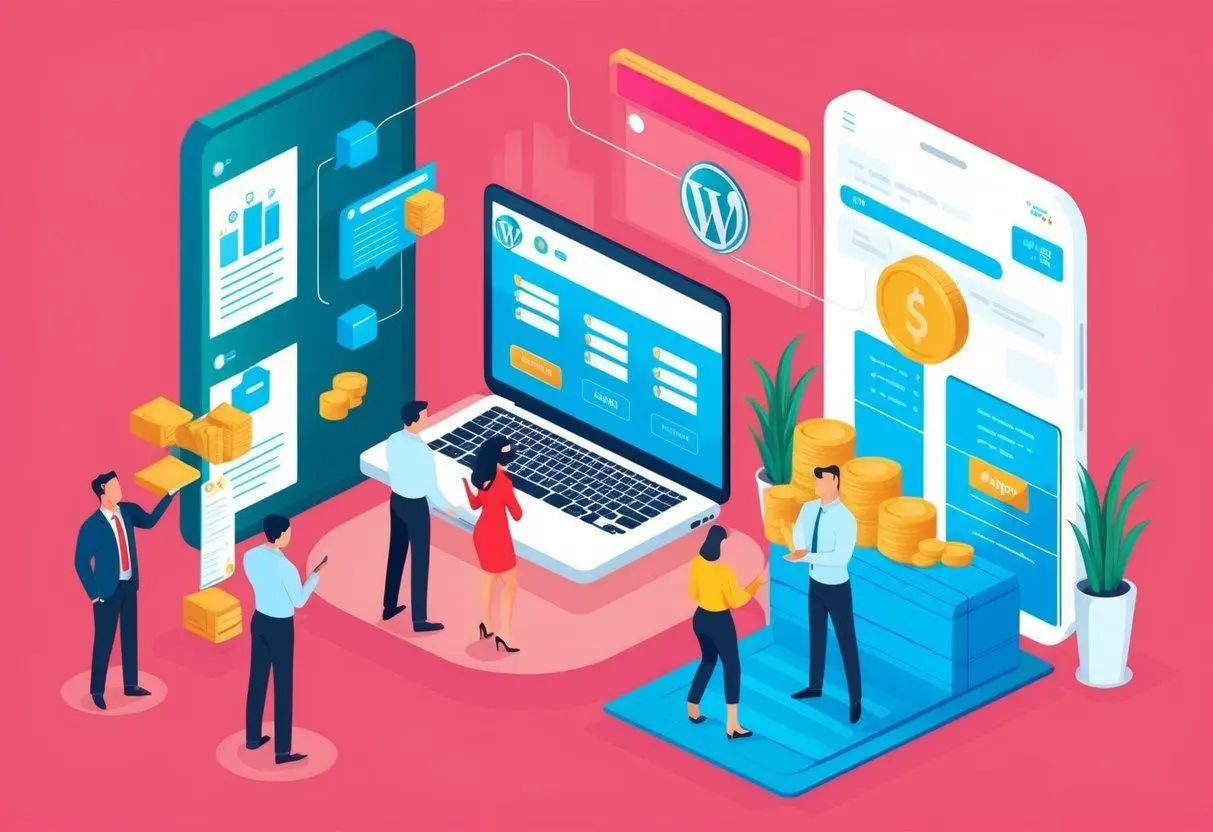
Not every online store needs to outsource fulfillment immediately, but certain business situations make professional fulfillment services especially valuable.
Growing E-commerce Businesses
When manual fulfillment begins consuming time you could spend on growth initiatives, it’s time to consider outsourcing. Many WooCommerce store owners reach this point sooner than expected, often during periods of rapid growth or seasonal peaks when orders multiply quickly.
Businesses with International Customers
WordPress stores serving global markets face complex shipping regulations, customs documentation, and international carrier relationships. Fulfillment partners with WP ecommerce international shipping expertise navigate these challenges daily, reducing delivery times and avoiding customs delays that frustrate your international customers. The right partner will help you implement smart parcel management strategies for both domestic and international shipments.
Multi-Channel Sellers
If you sell through multiple channels beyond your WordPress store—such as Amazon, eBay, or physical locations—centralized fulfillment becomes essential. The right partner integrates with all your sales channels, maintains accurate inventory across platforms, and ensures consistent delivery experiences regardless of where customers shop.
Integration with WooCommerce and Other Platforms
Smooth integration between your WordPress store and fulfillment system forms the foundation of efficient order processing.
Direct Connections
Look for fulfillment services offering straightforward connections with WooCommerce and other WordPress e-commerce plugins. These connections enable real-time order transmission, inventory updates, and shipping notifications without manual steps. The best integrations work in both directions, automatically updating your WordPress dashboard when orders ship and inventory changes.
Order Workflow Automation
Quality WordPress fulfillment solutions automate the entire order process. When a customer places an order, the system should generate pick lists, packing instructions, and shipping labels without human intervention. This automation eliminates manual steps that introduce errors and slow down your fulfillment. Many store owners wonder if automated fulfillment is the right choice for their business stage and order volume. The best solutions offer comprehensive distribution and fulfillment center operations that handle every aspect of the process.
Real-Time Inventory Updates
Inventory levels should update across all connected platforms whenever products ship or new stock arrives. This synchronization prevents overselling and gives customers accurate availability information while browsing your store. Many fulfillment centers now offer prompt inventory updates, ensuring your WooCommerce store reflects current stock levels.
Leveraging 3PL Providers for WordPress Stores

Third-party logistics (3PL) providers offer specialized expertise that elevates your fulfillment beyond what most store owners can achieve on their own.
Ready-Built Infrastructure
3PL for WordPress businesses gives you immediate access to established warehousing networks, carrier relationships, and fulfillment systems. Rather than building these capabilities yourself, you leverage operations refined through thousands of shipments. This proves especially valuable when handling specialized products with unique storage or shipping requirements.
Strategic Inventory Placement
Leading WordPress 3PL partners maintain multiple warehouse locations, positioning your inventory closer to customers. This strategic placement cuts shipping costs and delivery times—a competitive advantage in today’s marketplace. For example, bi-coastal warehouse placement can transform longer ground shipping into faster delivery for most U.S. customers without premium shipping costs.
Carrier Rate Advantages
3PLs negotiate volume discounts with major carriers that individual merchants cannot access. These discounts improve your margins on every order. Advanced 3PLs also select the optimal carrier and service level for each package based on delivery timeframes, package dimensions, and destination. Some partners even offer next-day air shipping options at more competitive rates than you could secure independently.
Inventory Management and Stock Optimization
Smart inventory management prevents both costly stockouts and excess inventory that ties up your capital.
Data-Driven Forecasting
Advanced WordPress fulfillment solutions offer inventory forecasting tools that analyze your sales history, identifying seasonal patterns and growth trends. These insights help you make informed inventory decisions, balancing product availability against storage costs.
Batch and Expiration Tracking
For products with shelf-life limitations or batch tracking requirements, look for WP warehousing solutions with lot tracking capabilities. These systems ensure proper rotation of inventory and provide traceability for quality control or compliance purposes. This approach is particularly important for health and beauty logistics or products with expiration dates.
Smart Reordering Systems
Quality inventory management systems alert you when products approach reorder thresholds, preventing stockouts that cost you sales and customer goodwill. The best solutions calculate these thresholds based on current demand patterns and lead times, adjusting as your business evolves.
What to Look for in a Fulfillment Partner
The right fulfillment partner becomes an extension of your business, representing your brand through every package shipped.
WordPress-Specific Experience
Prioritize partners with proven WordPress and WooCommerce integration experience. Ask for demonstrations of their dashboard interfaces and reporting capabilities to ensure they meet your needs. The partner should offer robust tracking that integrates with your WordPress store, providing customers with shipping updates directly on your website.
Clear, Transparent Pricing
Hidden fees quickly erode e-commerce profits. Select partners like Innovative Warehouse Solutions that provide transparent pricing structures with no surprises. Ask potential partners about all possible fees—receiving, storage, pick/pack, shipping, returns processing, and account management—to avoid unexpected costs later.
Adaptability to Your Needs
Your fulfillment partner should accommodate your business during both quiet periods and high-volume sales events. Discuss how they handle volume fluctuations, rush orders, and special packaging requirements. The best partners grow alongside your business, adding capacity and capabilities as your needs change.
WordPress Order Fulfillment FAQs
How do I add order tracking in WordPress?
Add order tracking in WordPress by using a plugin like WooCommerce Orders Tracking or Advanced Shipment Tracking. Install and activate the plugin, then configure tracking settings. Customers can view their order status on their account page or receive tracking links via email.
Does WooCommerce automatically complete orders?
WooCommerce automatically completes orders for digital products but requires manual completion for physical goods. Merchants can enable automatic order completion using plugins or custom code in WooCommerce settings.
How do I see orders in WordPress?
See orders in WordPress by navigating to WooCommerce > Orders in the admin dashboard. This section displays order details, statuses, and customer information. Filters allow searching by date, status, or customer name.
Does WooCommerce handle inventory?
WooCommerce handles inventory by tracking stock levels, updating quantities after sales, and notifying merchants of low stock. Inventory settings allow automated stock management, backorders, and stock status displays on product pages.
What is the best inventory management for WooCommerce?
The best inventory management tools for WooCommerce include TradeGecko, Zoho Inventory, and Katana. These tools offer real-time stock tracking, automated reordering, and multi-channel inventory synchronization.
Scaling Your Business with Fulfillment Solutions
By partnering with fulfillment experts, you gain the freedom to focus on business development rather than shipping logistics. This shift allows you to redirect resources toward marketing, product development, and customer experience improvements that drive revenue.
The right fulfillment partner does more than ship packages—they provide logistics expertise that enhances your competitive position. From optimizing shipping costs to improving delivery speeds, professional fulfillment creates advantages that customers notice and appreciate.
As your WordPress business expands into new markets or product categories, look for partners with international expertise for global expansion, or specialized handling capabilities for diverse product lines. The benefits of 3PL partnerships become even more valuable as your business grows and your logistics needs become more complex.
Innovative Warehouse Solutions delivers transparent, customer-focused WordPress order fulfillment that growing businesses need. Our WooCommerce integration, clear pricing, and personalized service create a fulfillment experience that strengthens your brand with every package shipped.
Ready to transform your WordPress fulfillment operations? Contact us today and discover how our tailored solutions can support your growth journey.
International Fulfillment Services: What to Look for in a True Partner
Is your ecommerce business missing global growth opportunities? International fulfillment services can turn cross-border operations from a logistical headache into a competitive edge.
While many companies limit themselves to domestic markets, partnering with the right international fulfillment provider opens access to new customer bases, lowers shipping costs, and speeds up delivery to global customers. The difference between modest growth and exceptional expansion often depends on finding a fulfillment partner that understands your specific business needs and grows alongside your international ambitions.
What to Look for in an International Fulfillment Partner
When evaluating partners for your global ecommerce fulfillment needs, focus on these key factors that directly affect your operations and customer experience.
Global Reach and Network
An effective international fulfillment partner positions fulfillment centers across key global markets. This strategic network keeps your products closer to international customers, cutting both shipping times and costs.
Look for providers with warehouses in your target markets. For example, if you sell to European and Asian consumers, you need a service with facilities in both regions. This proximity reduces cross-border delays and minimizes customs hold-ups.
Top partners maintain strong relationships with multiple carriers in each region, resulting in better shipping rates and more reliable delivery timeframes that boost your bottom line and customer satisfaction.
Cost-Effectiveness
International shipping can quickly eat into profit margins. A valuable fulfillment partner helps lower these expenses through smart shipping strategies and tariff management.
Choose partners with clear pricing structures without hidden fees. Unexpected costs for receiving, special handling, or seasonal operations can dramatically change your overall fulfillment expenses. The right partner provides straightforward quotes covering all aspects of the fulfillment process, as detailed in our guide on how to calculate shipping cost per item.
Many quality international fulfillment services also offer zone skipping, where smaller shipments combine into larger freight movements before separating for final delivery. This method can cut shipping costs while maintaining reasonable delivery times.
Technological Integration
Smooth technology integration is essential for successful international order fulfillment. Your fulfillment partner should offer systems that connect directly with your existing ecommerce platforms.
The best technology solutions provide:
- Real-time inventory synchronization across multiple warehouses
- Automatic order routing to the optimal fulfillment center
- Complete tracking information throughout the delivery journey
- Electronic customs documentation management
Look for partners offering dashboard visibility into inventory levels, order status, and performance metrics across all locations. This clarity helps you make smart decisions about inventory placement and shipping methods, similar to the benefits described in our article on smart parcel management.
For businesses using popular platforms, ensure your partner offers Shopify 3PL integration capabilities that maintain your store’s functionality while adding powerful fulfillment features. This seamless connection between your storefront and fulfillment operations is critical for accurate inventory and order processing across international markets.
Core Services That Drive International Success

The foundation of effective worldwide fulfillment rests on several essential services that your international partner should excel at delivering.
Warehousing and Inventory Management
Quality international fulfilment begins with proper product storage and organization. Your partner should maintain clean, secure facilities with appropriate storage conditions for your specific products.
For businesses in the health and beauty sector, this means climate control to protect temperature-sensitive items. For beverage companies, it includes proper handling procedures for fragile glass bottles, as outlined in our guide on how to ship glass bottles of liquid.
The best partners implement inventory management systems that prevent stockouts and overstock situations across international locations. They offer regular cycle counting and inventory reports that give you complete visibility into your global inventory position.
Order Processing Excellence
The heart of international ecommerce fulfillment lies in accurate, efficient order processing. Each step from picking to packing affects your customer’s experience and your operational costs.
Look for partners who verify accuracy at multiple stages in the fulfillment process. Barcode scanning, weight verification, and quality checks help prevent the common fulfillment mistakes that lead to returns and customer frustration.
Packaging expertise matters too, especially for international shipments that face more handling. Your partner should select appropriate packaging materials based on product characteristics and destination requirements, balancing protection against dimensional weight considerations, as explained in our article about dimensional weight and shipping costs.
Don’t overlook the importance of presentation in your international shipments. Partners that offer custom packing slip options allow you to maintain brand consistency across borders, helping international customers feel connected to your brand regardless of where your products ship from. These personalized touches can significantly enhance the unboxing experience and reinforce your brand identity in new markets.
International Shipping Expertise
Moving products across borders requires specialized knowledge that goes beyond domestic shipping experience. Your international fulfillment partner should demonstrate mastery of:
- Customs documentation requirements for different countries
- Harmonized System (HS) code classification for proper tariff assessment
- International shipping regulations for restricted products
- Duty and tax calculation for transparent customer checkout experiences
Partners with true international shipping expertise help you avoid costly delays and compliance issues while opening new markets for your products. They should offer multiple shipping speed options to balance cost and delivery time expectations for different customer segments.
Value-Added Services That Set Great Partners Apart
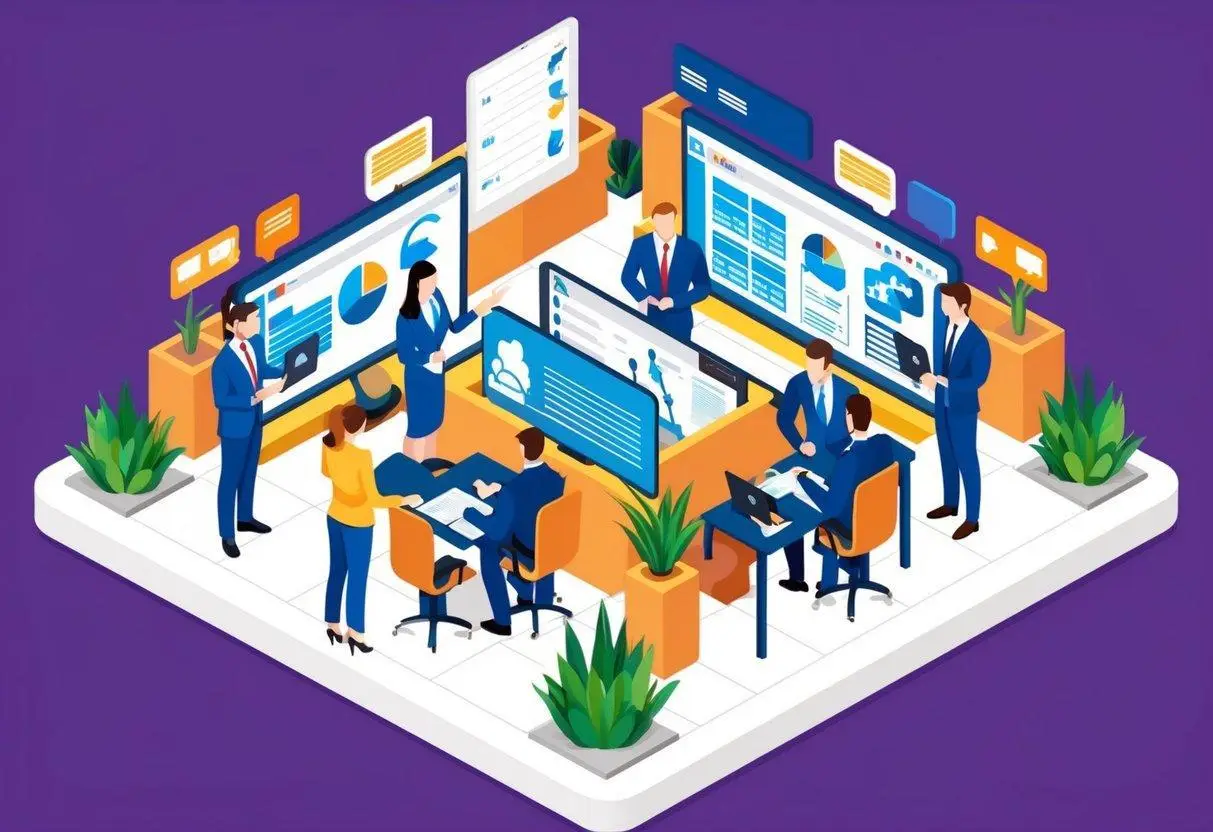
Beyond the basics, exceptional international fulfillment partners offer additional services that can give your business a competitive advantage in global markets.
Returns Management
An often overlooked aspect of international ecommerce is returns handling. The right partner establishes streamlined processes for receiving, inspecting, and processing returned items from international customers.
This includes providing localized return options that don’t require customers to ship products back to your home country – a costly proposition that can lead to customer dissatisfaction.
The most valuable partners turn returns data into actionable insights, helping you identify patterns and make product improvements. They can also handle refurbishment, restocking, or proper disposal of returned items according to your specifications and local regulations.
Customization and Market Adaptation
Different international markets often require product modifications to meet local preferences or regulations. Top international fulfillment partners offer services to help you adapt:
| Customization Service | Business Benefit | Example Application |
| Custom packaging | Market-specific branding | Holiday-themed packaging for target regions |
| Kitting and bundling | Tailored market offerings | Creating country-specific product combinations |
| Product labeling | Regulatory compliance | Adding required warning labels or translations |
| Insert management | Localized customer communication | Including region-specific promotions or instructions |
These customization capabilities allow you to present your products appropriately in each market without managing multiple inventory versions or shipping materials back and forth internationally.
Real-Time Communication and Support
What truly distinguishes exceptional international fulfillment partners is their approach to communication and problem-solving. While many providers offer basic tracking, the best partners provide:
- Dedicated account representatives who understand your business needs
- Proactive notification about potential issues before they affect customers
- Support availability that aligns with your business hours, not just their local time
- Problem resolution authority that doesn’t require multiple escalations
We believe personal connections and real-time communication make the difference between merely shipping products and truly supporting your international growth. When evaluating potential partners, pay special attention to their communication style during the sales process – it often reflects how they’ll treat you after you’ve signed the contract.
International Fulfillment Services FAQs
What is global fulfillment services?
Global fulfillment services handle order processing, storage, packing, and shipping for international customers. These services use warehouses worldwide to reduce shipping times and costs. Businesses partner with fulfillment providers to manage cross-border logistics, customs, and returns.
How does the fulfillment process work?
The fulfillment process starts with receiving inventory, storing products, and processing orders. Items are picked, packed, and shipped to customers. Real-time tracking ensures order accuracy and timely delivery. Fulfillment centers manage returns and restocking.
What is the difference between fulfillment and logistics?
The main difference between fulfillment and logistics is that fulfillment involves order processing, packing, and shipping, while logistics covers broader supply chain management. Logistics includes transportation, warehousing, and inventory control, whereas fulfillment focuses on customer order completion.
What are the disadvantages of fulfillment services?
Disadvantages of fulfillment services include high costs, less control over inventory, and potential shipping delays. Businesses may face hidden fees, integration challenges, and service limitations. Relying on third-party providers can affect flexibility and branding.
How much do fulfillment centers charge?
Fulfillment centers charge fees based on storage, order processing, and shipping. Costs range from $0.20 to $2.50 per item picked and packed. Monthly storage fees vary from $0.50 to $2 per cubic foot. Additional fees apply for special handling and returns.
Making the Right Choice for Your Business
Selecting the ideal international fulfillment partner isn’t just about comparing feature lists – it’s about finding a company that aligns with your business values and growth objectives.
The best partnerships balance capabilities against costs, providing exactly what you need without unnecessary extras that inflate your fulfillment expenses. As you evaluate options, consider which services directly contribute to your customer experience and operational efficiency.
Remember that international fulfillment isn’t just about moving products – it’s about representing your brand in global markets. The partner you choose becomes an extension of your company in the eyes of your customers, handling crucial touchpoints that shape brand perception.
At Innovative Warehouse Solutions, we focus on providing reliable, transparent international fulfillment services that help growing businesses expand globally without operational headaches. We handle the logistics complexity so you can focus on creating products customers love and developing marketing strategies that drive growth.
Ready to explore how our international fulfillment solutions can support your global expansion? Contact us today for a consultation that focuses on your specific business needs and growth goals.
Why Custom Packing Slips Matter to Your Brand Identity
Are your shipping materials missing a critical branding opportunity? Custom packing slips might seem like a minor detail in your fulfillment process, but they represent a powerful touch point with customers that many businesses overlook. When shoppers open their packages, the packing slip is often the first document they see—making it a prime opportunity to reinforce your brand identity.
While standard packing slips fulfill basic needs, custom packing slips transform this necessary document into a strategic asset that builds brand recognition, improves customer experience, and communicates your company values directly to buyers at a crucial moment in their journey with your products.
Why Custom Packing Slips Matter
Custom packing slips go beyond simply listing order contents. They serve multiple strategic purposes that can strengthen your brand and improve customer relationships.
Enhancing Brand Recognition and Loyalty
Custom packing slips provide a direct opportunity to reinforce your visual brand identity at a critical customer touchpoint. By incorporating your logo, brand colors, typography, and unique design elements, you transform a utilitarian document into a brand-building tool that makes a lasting impression.
This consistency matters. When customers receive a package with customized documentation that matches your website and email communications, you create a cohesive brand experience. This visual consistency builds familiarity and trust with your audience.
Research shows that consistent brand presentation across all platforms can increase revenue by up to 23%. Custom packing slips contribute to this consistency, helping customers instantly recognize your brand when they open their package.
Beyond visual elements, custom packing slips allow you to incorporate your brand voice and messaging. Whether your brand focuses on quality, sustainability, or exceptional service, your packing slip can reflect these values through thoughtful design choices that resonate with your target audience.
Elevating Customer Experience
The unboxing experience has become increasingly important in e-commerce, with 40% of consumers sharing their experiences on social media. Your custom packing slip plays a key role in this experience, creating a moment of delight as customers engage with your brand.
Personalization takes this experience further. Custom packing slips can include the customer’s name, references to previous purchases, or tailored recommendations. This personalization makes customers feel valued and recognized, strengthening their connection to your brand.
Well-organized packing slips provide practical benefits by making it easy for customers to:
- Verify their order is complete
- Understand product details
- Reference order numbers for customer service
- Review pricing information
- Understand return policies
This clarity reduces customer service inquiries and returns, saving time and resources while improving satisfaction. In contrast, confusing documentation can create frustration that affects the customer experience regardless of product quality.
| Standard Packing Slip | Custom Packing Slip |
| Generic design with no brand elements | Branded visuals that reinforce identity |
| Basic order information only | Personalized messaging and recommendations |
| Difficult to differentiate from competitors | Distinctive design that stands out |
| No opportunity for additional marketing | Space for promotions and loyalty programs |
| One-size-fits-all approach | Tailored to specific products and industries |
For health and beauty brands, custom packing slips can include product usage tips or ingredients information. Beverage companies might include serving suggestions or pairing recommendations. These industry-specific customizations add value beyond basic order information.
As noted in our guide to product fulfillment, the delivery experience forms a crucial part of customer satisfaction. Custom packing slips contribute significantly to this experience without adding substantial costs to your fulfillment process.
Differentiation in a Competitive Market
In crowded marketplaces where products and prices are often similar, custom packing slips provide a meaningful opportunity to stand out from competitors. This differentiation becomes particularly important when customers order similar products from multiple vendors.
Custom packing slips can showcase your brand’s unique strengths and values. For example, if sustainability is central to your brand, using recycled paper and highlighting your environmental commitments on the packing slip reinforces these values at the moment of product delivery.
This differentiation extends to the digital realm as well. When customers share their unboxing experiences online, your custom packing slip becomes part of the visual content that distinguishes your brand from others. This organic exposure expands your reach and attracts customers who appreciate your attention to detail.
Consider how luxury brands use custom packing slips as part of their premium experience. Companies like Apple have transformed packing documentation into an art form that communicates quality and thoughtfulness. Even small businesses can apply these principles to create memorable impressions that outshine larger competitors.
Our guide on avoiding order fulfillment mistakes highlights how neglecting documentation details can damage customer trust. Custom packing slips address this risk by ensuring every touchpoint with your customer maintains professional quality and brand consistency.
Effective Communication Tool
Custom packing slips serve as a direct communication channel with your customers at a critical moment – when they first receive their purchase. This presents a unique opportunity for targeted messaging that standard packing slips miss.
Your packing slip can include:
- Thank you messages that show appreciation
- Special offers that encourage repeat purchases
- QR codes linking to setup videos or instructions
- Information about loyalty programs
- Requests for reviews or social media sharing
- Notices about upcoming products or collections
Beyond marketing messages, custom packing slips provide a practical way to communicate return policies, warranty details, and customer service contacts. Presenting this information clearly on a custom template improves understanding compared to generic documentation.
For businesses selling technical products, custom packing slips can include product-specific information such as serial numbers, specifications, or maintenance reminders. This practical information adds value while reducing customer service inquiries.
Custom packing slips can integrate with your broader marketing efforts through seasonal messaging or campaign-specific communications. This integration creates a seamless experience between your digital marketing and physical delivery.
As discussed in our article on smart parcel management, every element of your shipping process communicates something about your brand. Custom packing slips turn what could be an overlooked touchpoint into a strategic communication opportunity.
How to Create Effective Custom Packing Slips

Creating and implementing custom packing slips doesn’t have to be complicated. Here are practical approaches that balance brand impact with operational efficiency.
Basic and Advanced Customization Techniques
Start with these basic customization elements that make a significant impact:
- Your logo prominently displayed at the top
- Brand colors for borders and accents
- Your brand’s typography for headers and text
- A thank you message in your brand voice
- Social media handles to encourage connection
- Contact information for customer support
For businesses ready to take customization further, HTML packing slip templates offer greater flexibility.
HTML templates allow for more sophisticated designs, dynamic content, and responsive layouts that work well across different order sizes. Many e-commerce platforms and fulfillment systems support HTML packing slip templates that can be modified to match your brand.
When designing your custom packing slip, follow these best practices:
- Maintain a clean layout that prioritizes readability
- Place your logo and brand elements at the top for immediate recognition
- Use hierarchy to distinguish between critical information and supplementary details
- Include adequate white space to prevent overwhelming customers
- Test your design with different order configurations to ensure it remains functional
For businesses selling internationally, custom packing slips can accommodate multiple languages or region-specific information that improves the customer experience for global buyers. Working with providers that offer international fulfillment services ensures your custom packing slips maintain brand consistency while adapting to local requirements and customs regulations in different markets.
Creating a packing slip that delivers both functional and brand benefits requires balancing information clarity with design elements. As our guide on streamlining shipping operations points out, documentation that balances efficiency with customer experience creates competitive advantage.
Utilizing Automation for Efficiency
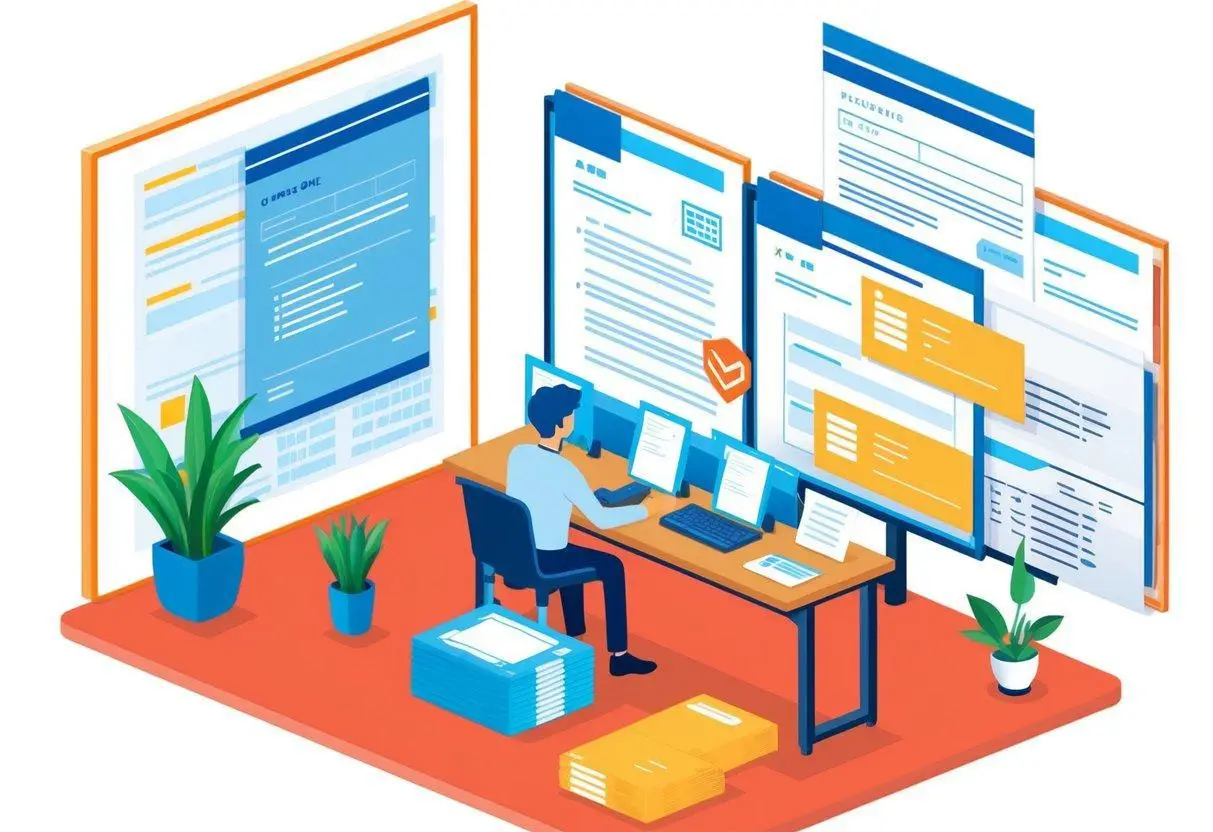
Implementing custom packing slips doesn’t have to increase operational complexity. Automation systems can generate personalized documentation for each order while maintaining efficiency in your fulfillment process.
Modern order management systems make it easy to create a packing slip template once and apply it automatically to all orders. These systems can dynamically populate custom fields with order-specific information while maintaining your brand design elements. This automation ensures consistency across all orders regardless of volume fluctuations.
When working with fulfillment partners, discuss options for implementing your custom packing slip designs within their systems. Professional 3PL providers can integrate your custom documentation into their fulfillment workflow, ensuring your brand presentation remains consistent even when outsourcing shipping operations. For e-commerce businesses, 3PL Shopify integration makes this process particularly seamless, allowing for automatic transfer of branding elements to packing documentation.
For businesses handling their own fulfillment, modern shipping software allows you to create custom packing slip templates that automatically populate with order information. This automated approach maintains efficiency while delivering the brand benefits of customization.
Automation enables data-driven improvements to your packing slip design. By tracking customer feedback, return rates, and support inquiries, you can identify opportunities to refine your documentation for better clarity and effectiveness.
Our article on the benefits of 3PL partnerships explains how the right fulfillment partner can help implement custom documentation while providing the transparency and accuracy that customers expect.
Custom Packing Slips FAQs
How do I make my own packing slip?
Create a packing slip by listing order details, item descriptions, and recipient information in a document. Use a template in Word, Excel, or online tools like Canva. Include company branding, order numbers, and special instructions. Print and insert it with shipped items.
What should a packing slip contain?
A packing slip should contain the order number, shipping address, item descriptions, quantities, and company details. It may also include return policies, barcodes, and special instructions. Packing slips help verify orders and assist with returns.
How do I customize packing slips in Shopify?
Customize packing slips in Shopify by editing the template in the Shopify admin. Navigate to “Settings” > “Shipping and Delivery” > “Packing Slips” and modify the HTML, CSS, or Liquid code. Add logos, custom messages, or brand colors for a personalized design.
How do I customize my packing slips in ShipStation?
Customize packing slips in ShipStation by navigating to “Templates” under “Printing Setup.” Select a default template or create a new one using HTML and dynamic fields. Add logos, return policies, or promotional messages to match your brand.
What is the difference between a packing slip and an invoice?
The main difference between a packing slip and an invoice is their purpose. A packing slip lists shipped items and order details, while an invoice includes pricing and payment information. Invoices are for billing, whereas packing slips confirm order contents.
Conclusion: Elevate Your Brand with Custom Packing Slips
Custom packing slips represent a valuable opportunity to strengthen your brand identity, improve customer experience, differentiate from competitors, and communicate effectively with buyers. By transforming this necessary documentation into a strategic asset, you create additional value from an operational requirement that already exists in your fulfillment process.
The businesses that recognize and capitalize on these opportunities gain advantage in competitive markets where brand perception and customer experience drive loyalty and repeat purchases. Whether you implement basic customization or develop sophisticated HTML packing slip templates, the investment delivers returns through stronger brand recognition and improved customer satisfaction.
Ready to elevate your fulfillment experience with custom packing slips? Contact Innovative Warehouse Solutions today to discuss how our fulfillment services can implement your custom packing slip designs while delivering the accuracy and transparency your customers expect.
B2B Fulfillment Services: What Growing Manufacturers Need to Know
Is your manufacturing business hitting a growth ceiling because of logistics challenges? B2B fulfillment services offer a solution that transforms logistics from a bottleneck into a competitive advantage. While you focus on creating quality products, the right fulfillment partner manages the complex logistics of storing, packing, and shipping large B2B orders. This partnership lets you concentrate on product development and customer acquisition without diverting valuable resources to operational burdens.
What is B2B Fulfillment and How Does It Differ from B2C?
B2B fulfillment services manage the entire order cycle for transactions between businesses—from receiving inventory to storing products, processing orders, and shipping completed packages to business customers such as wholesalers, retailers, or other manufacturers.
Modern B2B fulfillment connects your production capabilities directly with your customers’ needs through sophisticated inventory systems, order processing technology, and integration with business management platforms.
B2B fulfillment differs significantly from consumer fulfillment in several key ways:
| Aspect | B2B Fulfillment | B2C Fulfillment |
| Order Volume | Bulk quantities (pallets, cases) | Single or few items per order |
| Shipping Methods | LTL freight, full truckload, specialized carriers | Parcel services (USPS, UPS, FedEx) |
| Relationships | Long-term contracts with specific requirements | Transactional, often one-time purchases |
| Integration Needs | ERP systems, EDI connections, accounting platforms | E-commerce platforms, marketplace connections |
| Packaging | Industrial packaging, palletization | Consumer-friendly, branded packaging |
Manufacturers need fulfillment partners with specific B2B expertise who understand commercial shipping requirements, freight management, and the precision needed for business relationships where every error has magnified consequences.
Why B2B Fulfillment is Crucial for Manufacturers
Third-party B2B fulfillment services transform logistics from a cost center into a strategic advantage for manufacturers in two key ways:
Scalability Without Capital Investment
In-house fulfillment operations frequently become chokepoints for growing manufacturers. B2B fulfillment specialists provide built-in scalability without requiring proportional increases in staff, space, or systems.
During peak seasons, a dedicated fulfillment partner adjusts resources automatically to accommodate volume fluctuations—whether that means holiday rushes, promotional periods, or unexpected growth spurts.
The existing warehouse network provided by fulfillment specialists offers immediate geographic coverage without capital investment. This infrastructure converts what would be fixed expansion costs into variable expenses that align with actual business volume.
By outsourcing fulfillment operations, manufacturers also free up internal resources—both physical space and personnel time. Production areas previously used for storage can be reclaimed for manufacturing, and management attention shifts from logistics challenges to core business functions.
Enhanced Customer Satisfaction
Meeting modern B2B customer expectations requires precision and reliability that dedicated fulfillment services excel at providing. Today’s business customers demand the same seamless experience in their professional purchasing as they enjoy as consumers. Many manufacturers are finding that e-commerce 3PL services offer the expertise needed to meet these expectations across both B2B and B2C channels.
Professional B2B fulfillment centers maintain higher order accuracy rates than most in-house operations. This precision prevents the costly disruptions that occur when business customers receive incorrect shipments.
With strategically located fulfillment centers, manufacturers can position inventory closer to key customers, reducing transit times and shipping costs. This geographic advantage helps meet tight delivery windows that many business customers now expect.
Transparent inventory and order status information further enhances the customer experience. Modern fulfillment partners provide real-time visibility that allows manufacturers to keep their business customers informed about product availability and delivery timing.
Essential Components of Effective B2B Fulfillment
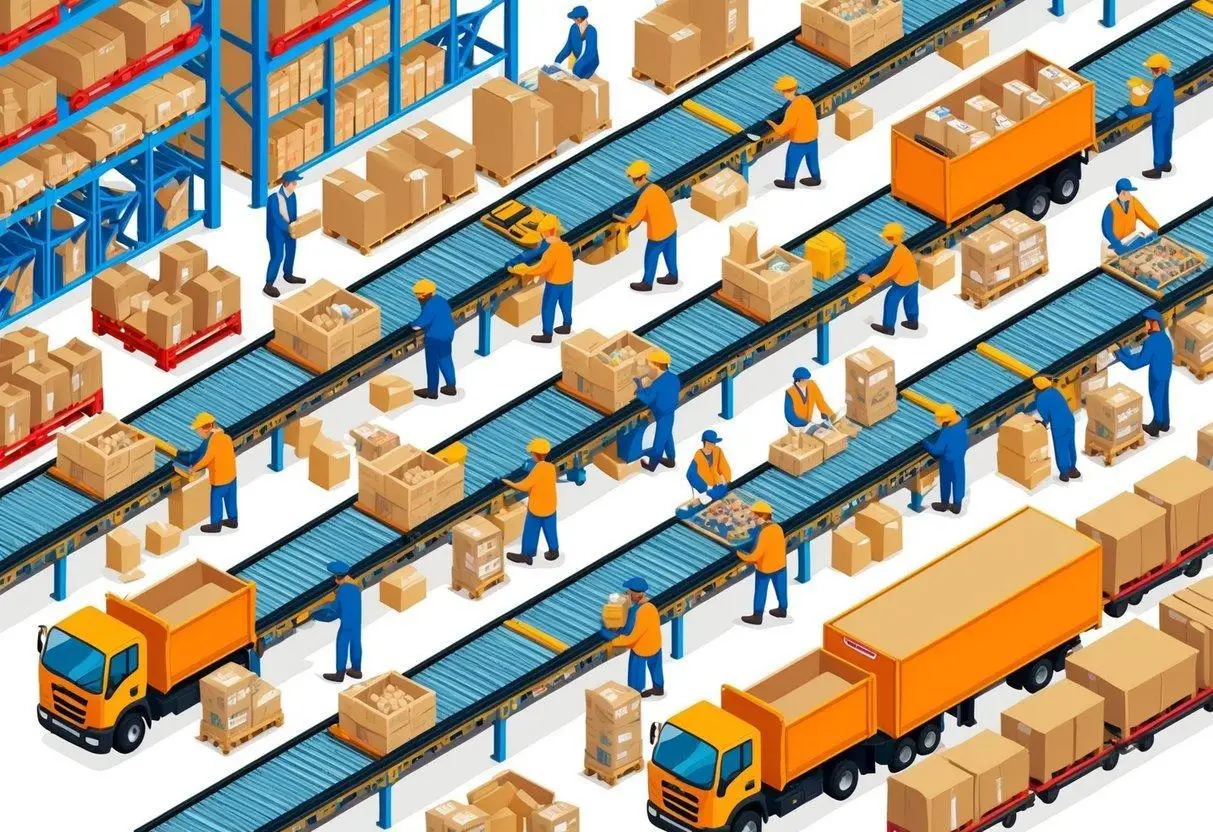
Successful B2B fulfillment operations depend on three interconnected systems working together seamlessly:
Integrated Order Management
Robust order management serves as the foundation of effective B2B fulfillment, handling the entire lifecycle of orders from initial receipt through processing, shipping, and post-delivery support.
For manufacturers, order management systems must accommodate various order types and sources, whether through EDI connections, online portals, email, or traditional purchase orders. Advanced fulfillment partners provide systems that centralize these diverse inputs into a unified workflow.
Order validation prevents costly errors by confirming that orders can be fulfilled as requested before processing begins. This step is especially important for B2B orders that often contain specific requirements regarding shipping methods, delivery timing, and documentation.
Integration capabilities with both manufacturer and customer systems eliminate duplicate data entry and provide real-time information flow across the supply chain.
Precision Inventory Management
Accurate inventory control directly impacts both operational costs and customer satisfaction in B2B fulfillment.
Real-time inventory visibility across all storage locations prevents stockouts and allows for effective inventory allocation. This visibility helps manufacturers make informed decisions about production schedules and inventory investments.
Batch and lot tracking becomes particularly important for manufacturers with expiration-sensitive products or quality control requirements. Advanced fulfillment systems maintain detailed records of manufacturing dates, lot numbers, and expiration information, ensuring proper rotation and traceability.
Professional fulfillment centers typically achieve inventory accuracy rates exceeding 99%, significantly higher than most in-house operations can maintain consistently.
Strategic Warehousing and Distribution
Warehouse network design should align with customer locations and transportation costs to optimize both speed and expenses.
Within warehouses, layout and process optimization dramatically impact both speed and accuracy. Professional fulfillment centers arrange inventory based on picking frequency, compatible storage requirements, and operational workflow.
Technology applications like barcode scanning, RFID tracking, and voice-directed picking enhance warehouse efficiency, verifying accuracy at each step while increasing productivity compared to paper-based processes.
Distribution network optimization connects warehousing with transportation planning to identify the most cost-effective shipping methods while meeting service commitments.
Choosing the Right B2B Fulfillment Partner
Selecting the appropriate fulfillment partner represents one of the most consequential decisions for growing manufacturers. Focus on these critical evaluation factors:
Industry-Specific Expertise
Partners with specific experience in your industry understand your unique challenges and requirements without extensive education.
Industry-specific expertise extends beyond basic knowledge to include established solutions for common challenges in your sector, whether that’s handling fragile items, managing temperature-sensitive products, or accommodating seasonal demand fluctuations.
Relevant certifications and compliance understanding validate industry expertise. Depending on your products, partners might need specific certifications for handling food, pharmaceuticals, hazardous materials, or other regulated items.
Ask for specific examples of their work with similar manufacturers, including case studies and references from companies in your industry.
Integration Capabilities
Your fulfillment partner should offer seamless connections with your ERP system, e-commerce platform, or order management software. These integrations eliminate manual data entry, reduce errors, and provide real-time information flow.
Advanced warehouse management systems optimize picking routes, manage inventory locations, track worker productivity, and maintain accuracy records. The sophistication of a partner’s WMS directly impacts their operational efficiency.
Look for partners offering customizable dashboards, automatic report generation, and data export capabilities that support informed decision-making.
Evaluate a partner’s technology roadmap to ensure their capabilities will continue supporting your business as it evolves.
Customer Support Quality
Responsive, knowledgeable support proves especially valuable in B2B fulfillment, where order issues can have cascading effects on business operations.
Dedicated account management provides personalized attention and demonstrates commitment to your business success. Your account manager should thoroughly understand your operations and proactively identify improvement opportunities.
Issue resolution procedures reveal much about a fulfillment partner’s operational philosophy. The best partners take ownership of issues and communicate transparently throughout the resolution process.
When evaluating support quality, look beyond sales promises to operational reality by speaking with existing clients and reviewing detailed service level agreements.
Streamlined Steps in B2B Fulfillment Management
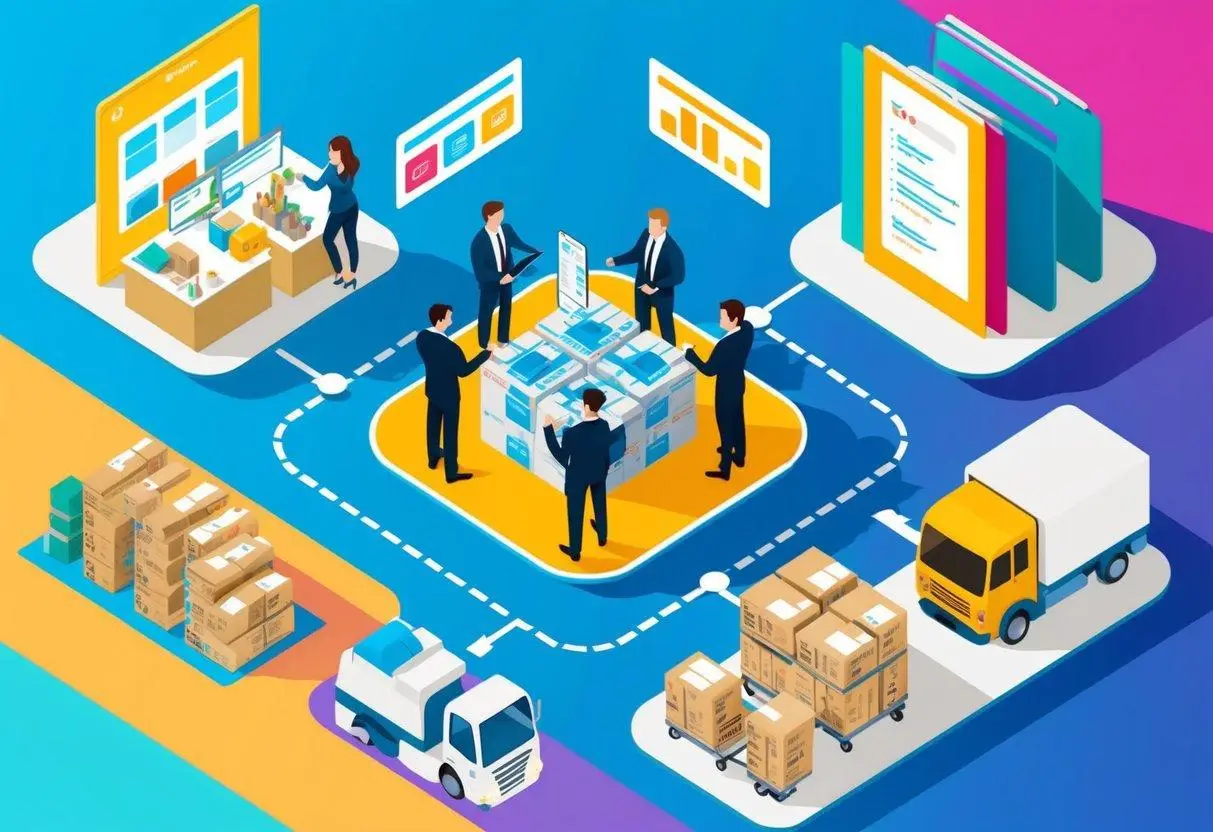
Understanding the operational workflow helps manufacturers evaluate and optimize their fulfillment partnerships:
Smart Order Processing
Effective fulfillment systems capture orders from multiple sources—EDI transmissions, online portals, emailed purchase orders—consolidating them into a unified processing workflow.
Verification procedures confirm order accuracy and feasibility before processing begins, catching potential issues early to prevent costly errors later.
Order prioritization routes incoming orders based on service level agreements, shipping deadlines, and business rules. This intelligent sequencing ensures that urgent orders receive appropriate attention.
Documentation preparation generates specific documents needed for customs clearance, regulatory compliance, or customer receiving procedures while reducing administrative burden.
Efficient Fulfillment Operations
Inventory allocation assigns specific units to pending orders based on factors like lot numbers, expiration dates, and storage locations to prevent shipment of near-expiry products while optimizing picking efficiency.
Many manufacturers benefit from specialized pick and pack fulfillment services that maintain high accuracy while processing diverse B2B order types. These services employ trained staff and advanced systems designed specifically for business-to-business shipment requirements.
Quality control checkpoints verify that picked items match order requirements before packing begins, using barcode scanning, weight validation, or visual inspection depending on product characteristics.
Value-added services like kitting, custom labeling, light assembly, and special packaging might be required for specific customers or markets, so confirm that potential fulfillment partners offer these services when needed.
Regular analysis of picking patterns, travel paths, and processing times helps identify bottlenecks and refinement opportunities that increase throughput while reducing costs.
Optimized Delivery and Returns
The optimal carrier for each shipment depends on factors including destination, timeline, parcel characteristics, and service requirements. Advanced fulfillment systems make data-driven carrier selections that balance these factors appropriately.
Shipping cost management strategies help control transportation expenses without sacrificing service quality, including zone skipping and dimensional weight optimization.
Proactive notification systems alert stakeholders about potential shipping delays, allowing contingency planning before problems impact operations.
Effective 3PL returns management is increasingly important for manufacturer credibility and inventory accuracy. Streamlined returns procedures quickly inspect, document, and process returned items, making appropriate products available for resale while maintaining accurate records of return reasons for product improvement insights.
Looking Forward: The Digital Transformation of B2B Fulfillment
B2B transactions increasingly mirror B2C experiences, with digital platforms replacing traditional ordering methods. This shift demands more sophisticated fulfillment capabilities.
Business customers now expect self-service ordering capabilities, real-time inventory visibility, and detailed product information—similar to consumer e-commerce experiences but adapted for business needs.
Automated reordering systems transform B2B fulfillment by using predetermined inventory thresholds or consumption rates to automatically generate replenishment orders without human intervention.
API-driven integrations create seamless connections between systems, allowing real-time data flow throughout the supply chain and eliminating information silos.
Environmental considerations increasingly influence B2B fulfillment decisions as both manufacturers and their customers prioritize sustainability goals through right-sized packaging, energy-efficient facilities, and optimized transportation planning.
B2B Fulfillment Services FAQs
What are the 4 types of B2B?
The four types of B2B are producers, resellers, governments, and institutions. Producers create goods or services. Resellers distribute products. Governments purchase supplies for public use. Institutions, such as hospitals and schools, buy in bulk for operational needs.
How does B2B fulfillment work?
B2B fulfillment involves receiving bulk orders, picking and packing items, and shipping to businesses. Orders are processed with inventory management systems to ensure accuracy. Shipping often involves freight carriers and scheduled deliveries to meet business needs.
What is an example of a fulfillment center?
An example of a fulfillment center is an Amazon Fulfillment Center. These facilities store, pick, pack, and ship products for businesses. Companies use them to outsource logistics and ensure fast delivery to customers.
What is B2B in a warehouse?
B2B in a warehouse refers to storing, managing, and distributing bulk products to businesses. Warehouses handle large inventory volumes, process wholesale orders, and coordinate shipments. Efficient logistics ensure timely delivery and supply chain optimization.
What are B2B products?
B2B products are goods and services sold from one business to another. Examples include raw materials, wholesale goods, office supplies, and software solutions. These products support business operations, manufacturing, and resale.
Partner with IWS for Strategic B2B Fulfillment
B2B fulfillment services offer growing manufacturers a strategic advantage by transforming logistics challenges into competitive strengths. The right fulfillment partner becomes an extension of your manufacturing business, representing your brand through every interaction with business customers.
At Innovative Warehouse Solutions, we specialize in providing transparent, customer-focused B2B fulfillment services for growing manufacturers. Our approach combines industry expertise with advanced technology and responsive support to help manufacturers overcome common fulfillment challenges and achieve their business goals.
Ready to explore how professional B2B fulfillment services could benefit your manufacturing business? Contact us today for a personalized consultation that addresses your specific fulfillment challenges and opportunities.
The Basics of Pick and Pack Services for Small Business Owners
Is your small business struggling to keep up with order fulfillment? Pick and pack services might be the solution you need. This essential fulfillment process handles the crucial steps between receiving an order and shipping it to customers. For business owners juggling multiple responsibilities, outsourcing pick and pack fulfillment can transform your logistics from a daily challenge into a competitive advantage – reducing costs, improving delivery times, and letting you concentrate on growing your business.
Understanding Pick and Pack Services
Pick and pack services form the backbone of modern order fulfillment. This process involves:
- Retrieving products from warehouse storage (picking)
- Preparing them for shipping (packing) based on customer orders
- Creating a bridge between inventory management and shipping logistics
For businesses selling multiple products, pick & pack warehouse services eliminate the complexity of managing inventory items across different storage locations. Unlike traditional warehousing that simply stores products, a pick and pack warehouse actively processes orders through a systematic approach that minimizes errors.
E-commerce businesses particularly benefit from professional fulfillment as online sales continue to surge. Businesses using dedicated fulfillment centers typically process orders 3-5 times faster than those handling fulfillment in-house.
The warehouse pick and pack process follows a structured workflow designed to move products quickly from shelves to customers:
- Order Reception – Customer orders enter the warehouse management system
- Picking – Staff retrieve items from their storage locations using picking lists
- Packing – Products are securely packaged with appropriate materials
- Shipping Preparation – Packages are weighed, labeled, and prepared for carrier pickup
During picking, warehouse staff collect each item using methods tailored to order volume and complexity. This requires precise inventory management systems to track product locations in real-time.
At packing stations, specialized staff package products securely, selecting appropriate materials that protect products during transit. Professional pick and pack fulfillment services also include quality checks to verify order accuracy before final packaging.
Benefits of Pick and Pack Services for Small Businesses
Professional pick and pack services provide distinct advantages that help small businesses compete with larger competitors.
Cost Efficiency
Outsourcing pick and pack fulfillment creates immediate cost savings:
- Reduced overhead – Eliminate warehouse space, equipment, and staffing expenses
- Lower shipping rates – Access volume-based carrier discounts typically reserved for large shippers
- Minimized inventory costs – Professional inventory management prevents overstock situations
Pick and pack warehousing services offer flexible pricing models based on actual usage. This pay-for-what-you-use approach avoids fixed costs during slower business periods or seasonal fluctuations.
For growing businesses, converting fixed costs to variable expenses improves cash flow and financial stability – particularly valuable for businesses with limited capital resources.
Scalability and Customer Satisfaction
Professional fulfillment services excel in two critical areas: handling growth and delighting customers.
Scalability Benefits:
- Accommodates seasonal spikes without requiring temporary staff or equipment
- Adapts to sudden growth without operational disruption
- Supports expansion into new markets or product lines
Customer Satisfaction Improvements:
- Faster delivery times through optimized shipping processes
- Reduced error rates with systematic verification procedures
- Real-time tracking and shipping notifications
Modern pick and pack operations use barcode scanning and inventory systems that verify accuracy at multiple checkpoints. This technology-driven approach reduces costly errors that lead to returns and customer complaints.
In today’s competitive marketplace, customers expect fast, accurate delivery. Working with a partner like Innovative Warehouse Solutions provides the real-time, personalized support that builds customer loyalty through exceptional fulfillment experiences.
Pick and Pack Strategies
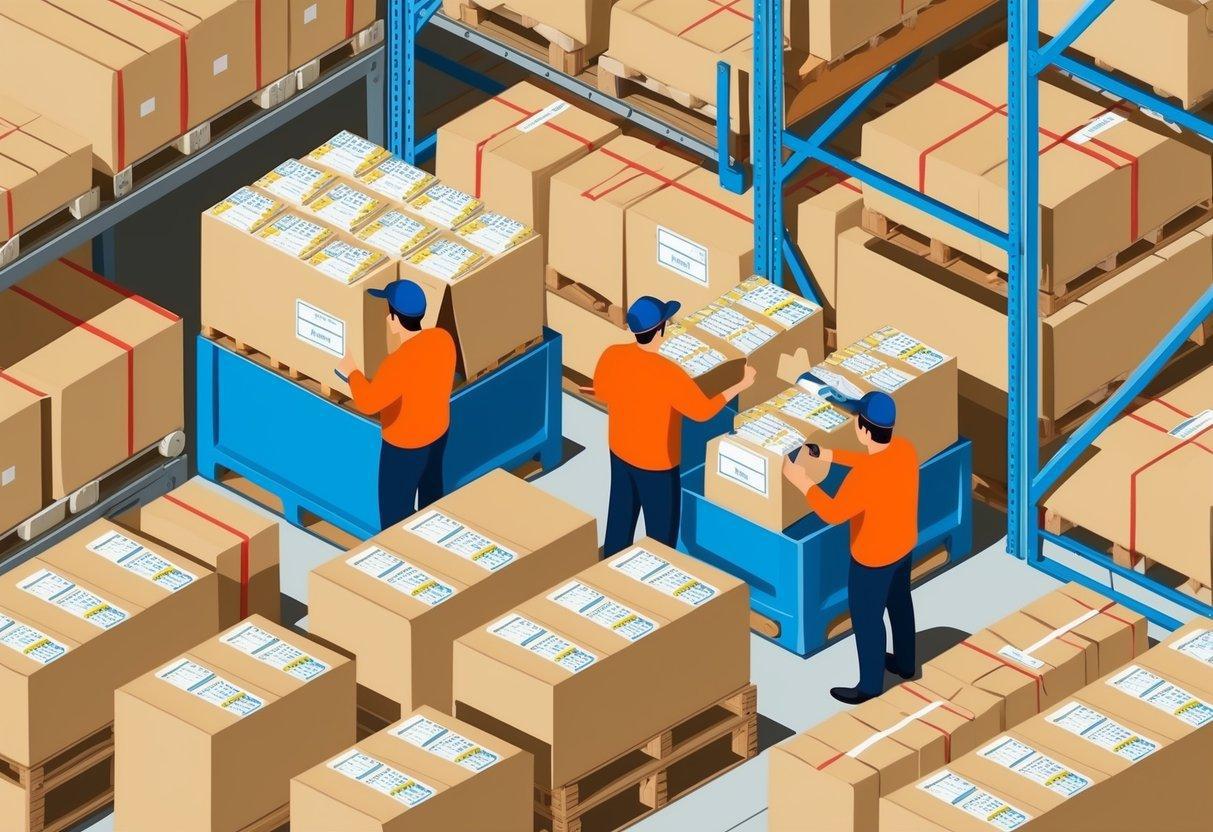
Selecting the right picking strategy significantly impacts your fulfillment efficiency and accuracy.
Piece Picking vs. Batch Picking
Piece Picking:
- One order processed at a time from start to finish
- Ideal for businesses with low order volumes or unique products
- Maximizes accuracy for specialty items
Piece picking works best when orders require special handling or customization. The picker’s complete attention on a single order minimizes errors but becomes less efficient as volume grows.
Batch Picking:
- Multiple orders processed simultaneously
- Reduces travel time by collecting similar items for different orders in one pass
- Can improve productivity by 30-40% compared to piece picking
Batch picking shines when shipping similar products to many customers. The consolidation of picking routes dramatically increases efficiency but requires more sophisticated sorting processes.
Zone and Wave Picking for Larger Operations
As operations grow, more advanced picking methods become valuable:
Zone Picking:
- Warehouse divided into distinct sections
- Pickers specialize in specific zones
- Orders move between zones to collect all required items
Wave Picking:
- Orders released in coordinated groups based on priorities
- Balances workload throughout the day
- Helps meet specific carrier pickup deadlines
These methods excel in larger warehouses with diverse product categories. By specializing in specific areas, pickers become more efficient and knowledgeable about their assigned products.
Strategic warehousing combined with the right picking method creates a powerful advantage for businesses looking to improve fulfillment performance without sacrificing accuracy.
Choosing a Pick and Pack Service Provider
Finding the right fulfillment partner is critical for your business success. The decision impacts your customer experience, operational costs, and growth potential.
What to Look for in a Service Provider
When evaluating pick and pack fulfillment partners, prioritize these factors:
- Transparency – Clear pricing without hidden fees or unexpected charges
- Customer support – Real-time, personalized assistance when issues arise
- Technology integration – Seamless connections with your sales platforms
- Industry experience – Familiarity with your specific product requirements
- Strategic locations – Warehouses positioned to reach your customers quickly
The best partnerships begin with honest conversations about your business needs. Quality providers like Innovative Warehouse Solutions take time to understand your growth plans rather than offering generic solutions.
Ask potential partners about their experience with products similar to yours. Health and beauty items, lightweight consumer goods, and beverages each have unique handling requirements that benefit from specialized expertise.
The 3PL Advantage for Small Businesses
Working with a third-party logistics (3PL) provider for pick and pack services offers small businesses significant benefits:
- Professional expertise – Access to knowledge and systems that would take years to develop internally
- Carrier relationships – Preferred shipping rates normally unavailable to smaller shippers
- Technological edge – Enterprise-level systems without major capital investment
- Flexible resources – Ability to scale operations up or down based on actual needs
Many businesses transforming from in-house fulfillment to partnerships with specialized 3PLs report dramatic improvements. For example, lightweight consumer goods brands working with Innovative Warehouse Solutions have seen shipping costs decrease by up to 20% alongside faster delivery times.
Online retailers particularly benefit from specialized 3PL for ecommerce solutions that understand the unique challenges of digital sales channels and customer expectations. These tailored services help growing brands compete effectively against larger competitors.
The ideal 3PL relationship feels like a partnership rather than a vendor arrangement. Look for providers who offer transparent communication, proactive problem-solving, and genuine interest in your business growth. When evaluating potential partners, ask about their approach to customer support and problem resolution – these factors often distinguish exceptional providers from merely adequate ones.
Implementing Pick and Pack Services
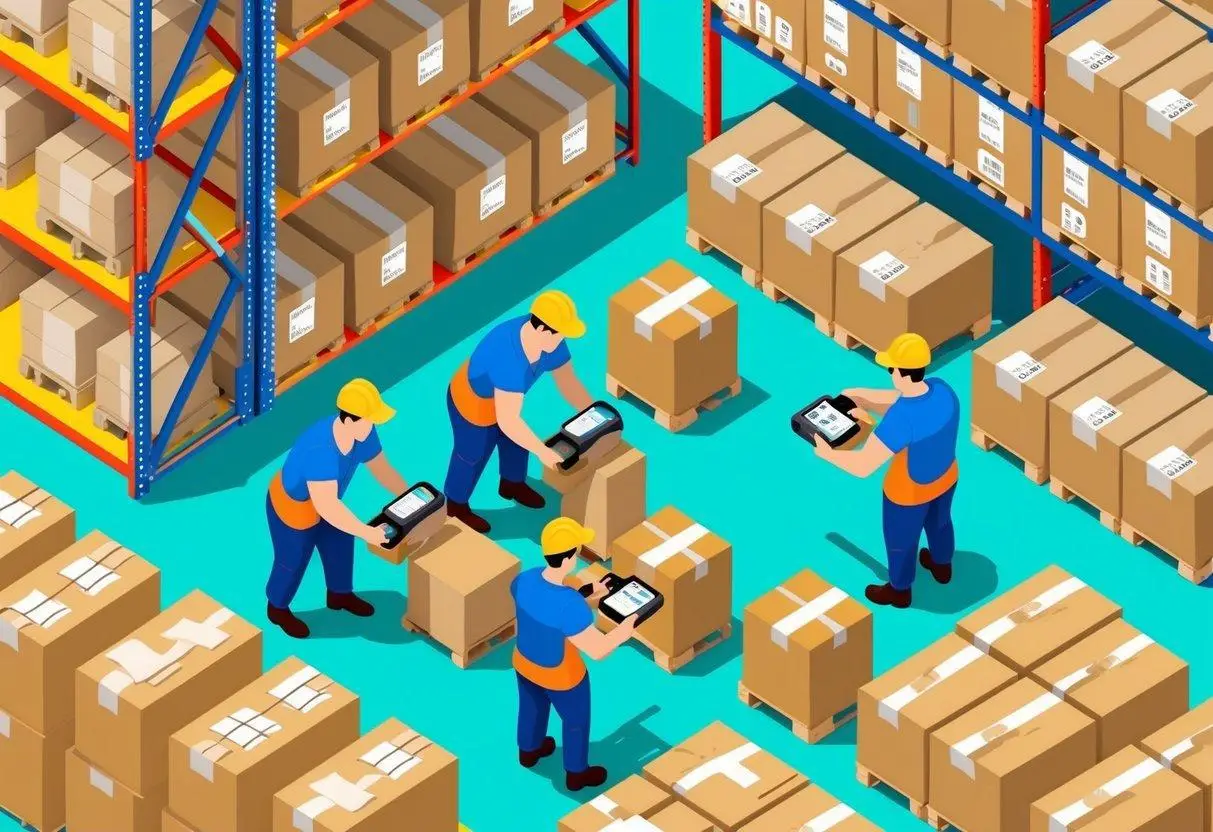
Transitioning to professional pick and pack fulfillment requires thoughtful planning and execution.
Setting Up Your Process
Establishing an effective fulfillment partnership involves these key steps:
- Inventory assessment – Audit your products before transfer to identify discrepancies
- System connection – Link your sales channels with the fulfillment provider’s systems
- Order rules creation – Define how different order types should be handled
- Packaging standards – Determine materials and presentation requirements
Begin with a comprehensive inventory audit before transferring stock to your fulfillment partner. This creates an accurate baseline and prevents discrepancies when operations begin. Many fulfillment centers provide specific receiving guidelines to streamline this process.
Technology connections between your sales channels and fulfillment systems are crucial for success. Quality providers offer pre-built integrations with popular e-commerce platforms, allowing orders to flow automatically without manual intervention.
For businesses selling primarily to other businesses, working with a provider experienced in b2b order fulfillment helps address the unique requirements of wholesale, distribution, and inter-business logistics, which often involve larger order sizes and different shipping expectations than direct-to-consumer fulfillment.
For businesses with unique needs, look for pick and pack services that accommodate custom packaging options. This maintains brand consistency even when outsourcing fulfillment operations.
Measuring Success and Optimization
Once your fulfillment partnership is active, track these key performance indicators:
- Order accuracy rate – Percentage of orders shipped without errors
- Processing time – Hours between order receipt and shipment
- Shipping costs – Average expense per package shipped
- Customer satisfaction – Feedback specifically related to delivery experience
Schedule regular performance reviews with your fulfillment partner to examine these metrics and identify improvement opportunities. Analyze trends in exceptions or delays to address potential systemic issues.
Data plays a vital role in optimization. Use your provider’s reporting tools to make informed decisions about inventory management and shipping options. Many advanced fulfillment systems offer customizable dashboards highlighting your most important metrics.
As your business evolves, periodically reassess your fulfillment strategies. What works for your current operation may need adjustment as you grow or introduce new product lines.
Common Questions About Pick and Pack Services
What exactly does pick and pack mean?
Pick and pack refers to the process of retrieving products from storage (picking) and preparing them for shipment (packing) based on customer orders. It bridges the gap between receiving an order and shipping it to the customer.
How do pick and pack services differ from drop shipping?
With pick and pack services, you own the inventory stored at the fulfillment center. Drop shipping involves a supplier who both stores products and ships them directly to your customers – you never handle or own the inventory.
Can fulfillment services handle returns processing?
Yes, most pick and pack service providers offer returns management as part of their services. This typically includes receiving returned items, inspecting them, and either returning them to inventory or disposing of them according to your specifications. Understanding the 3pl return warehouse process is crucial for businesses with significant return volumes, as efficient returns handling directly impacts customer satisfaction and inventory management.
How fast can professional pick and pack services process orders?
Quality fulfillment centers typically process orders received before cutoff times for same-day shipping. During standard operations, most orders are picked, packed, and ready for carrier pickup within hours of being received in the system.
What types of businesses benefit most from pick and pack services?
E-commerce retailers, subscription box companies, and businesses with multiple SKUs gain the greatest advantages from professional pick and pack services. These businesses particularly benefit from the expertise, infrastructure, and economies of scale that dedicated fulfillment provides.
Transform Your Business with Professional Fulfillment
Professional pick and pack services offer small businesses a powerful way to streamline operations, reduce costs, and improve customer satisfaction. By partnering with a specialized fulfillment provider, you gain access to expertise and infrastructure without significant capital investments.
The right warehouse partner brings scalability that accommodates your growth, technology that connects your sales channels with physical fulfillment, and efficiency that reduces both costs and delivery times.
At Innovative Warehouse Solutions, we pride ourselves on transparent, customer-focused pick and pack services that stand out in an industry often known for impersonal operations. Our approach emphasizes real-time communication, billing clarity, and accurate fulfillment – allowing you to concentrate on growing your business rather than managing logistics.
Ready to transform your fulfillment operations? Contact us today for a consultation to discuss how our pick and pack services can help your business thrive.



